Hawaii overtourism: Residents beg tourists to stop visiting amid post-pandemic boom
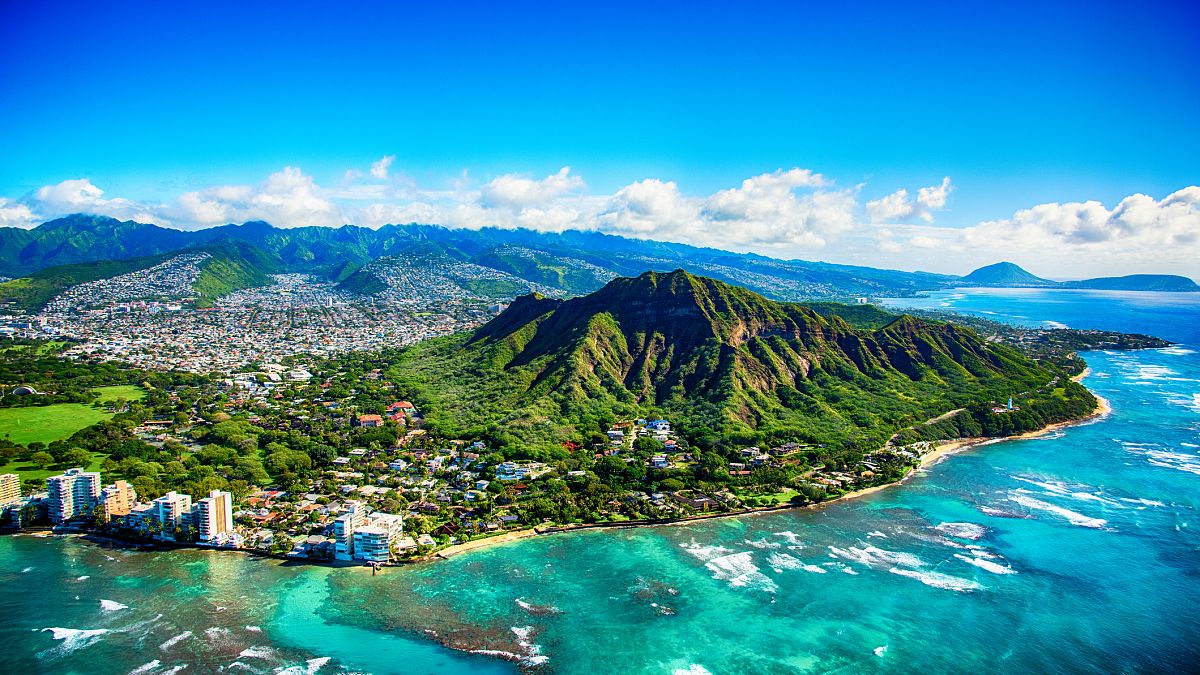
Tens of thousands of extra tourists are making Hawaii’s roads, beaches and restaurants practically unusable.
Hawai'i is one of the most popular holiday destinations in the world - with plenty of history, culture, and natural attraction to explore, what's not to love?
But being one of the top destinations for holidaymakers isn't all it's cracked up to be. The island state is burdened by overtourism - and it's becoming a big problem.
Last year, tens of thousands of extra US tourists left Hawai'i in turmoil as it struggled to cope with unprecedented tourism demands .
- New Zealand: Tourists urged to 'tread lightly' as island country fully reopens
- New visa rule: Schengen applications to move online for millions of visitors
All fully vaccinated travellers from the US were invited to skip quarantine and pre-flight testing last year, resulting in a host of complications across the group of islands.
Hospitality worker shortages, congested roads and 90-minute restaurant waiting times were just some of the problems the state tried to navigate last summer.
Plus, videos on social media showed tourists touching endangered Hawaiian monk seals and hiking on forbidden trails like Diamond Head (which has since implemented a reservation-only booking system to curb visitor numbers).
Videos on social media showed tourists touching endangered Hawaiian monk seals and hiking on forbidden trails like Diamond Head.
One local Mayor went as far as to ask airlines to assist the state by decreasing the amount of incoming flights arriving there.
“We’re asking for just a pause, if you want to use that term,” Mayor Mike Victorino said at a press conference.
“We don’t have the authority to say ‘stop,’ but we’re asking the powers that be to help us in this sense.”
- What is 'extractive tourism' and what can we do about it?
- Visit these little-known travel destinations before they get too popular

Why did airlines fail to cooperate?
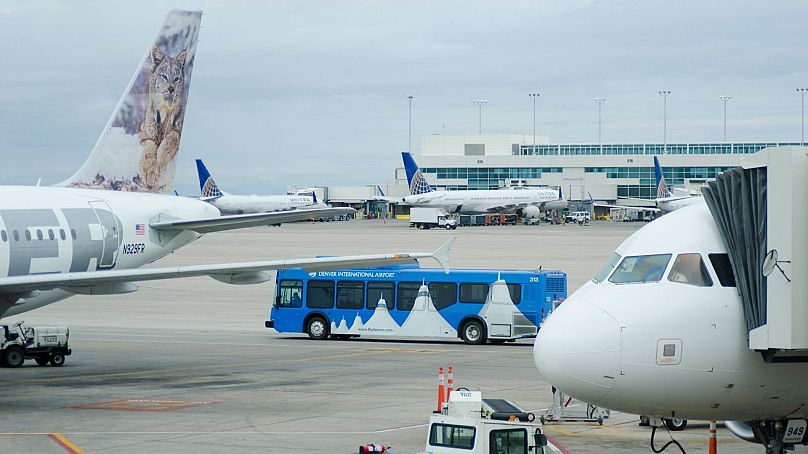
Hawaii’s close proximity to the United States means that it has taken the full brunt of tourists using relaxed travel restrictions as an opportunity for an island escape .
Mayor Victorino is responsible for overseeing the state’s second-largest island, Maui - one of the areas most stretched by increased demand.
Its 30 miles of unspoiled beaches draw in up to 300,000 arrivals each month, but current visitor numbers exceed even pre-pandemic levels.
For the first three days of its summer season in July last year, it received 35,000 tourists each day - providing airlines little reason to listen to the Mayor’s requests.
What do the residents of Hawai'i think of this influx?
Residents of Maui were recently left dismayed following news of a water shortage that would see them fined $500 (€426) for washing their cars, watering their lawns, and a list of other “non-essential” water-related activities.
People took to social media to express their concerns about the level of tourism in their areas.
View this post on Instagram A post shared by Mele❤️ (@melemaikalanimakalapuaa)
View this post on Instagram A post shared by End_Hate_In_Hawaii (@end_hate_in_hawaii)
Others feared the spread of COVID variants was causing already stretched businesses to serve at 50 per cent capacity on some islands in the archipelago.
If we’re limiting social gatherings, we cannot allow 1million tourists into Hawaii/month. It’s uncool to tell locals to keep apart, when we see groups of 5-10 tourists walking around town. *Limiting air travel* to/from Hawaii is the most effective way to curb COVID transmission. — Ilima De Costa🦋 (@kbaygirl) August 11, 2021
“What about our Hawaii economy and the tourists industry?” Our dependency on it is our sickness! — Kainoa Keanaaina (@kaikeanaaina) August 10, 2021
“For more than a year, COVID-19 stopped everybody from going almost everywhere,” Victorino explains.
“And so now Maui has become - and the state of Hawai'i - a focus point for that pent-up demand. We’d like to welcome them, but we also realise that we only have so many beaches.”
Local experts say the high density of constant tourism will mean there is little reprieve for those living in the state.
How can Hawai'i work towards a more sustainable tourism framework?
The situation remains unmanageable for a number of reasons, explains Dr. Jerry Agrusa, Professor of Travel Industry Management at the University of Hawai'i.
“The Delta variant was killing people," he says. So residents of Hawai'i needed to be cautious when approximately a million people were coming into the country.
Dr. Agrusa says there are a number of factors beyond the pandemic that mean tourists and locals across Hawai'i are ending up in less than ideal circumstances.
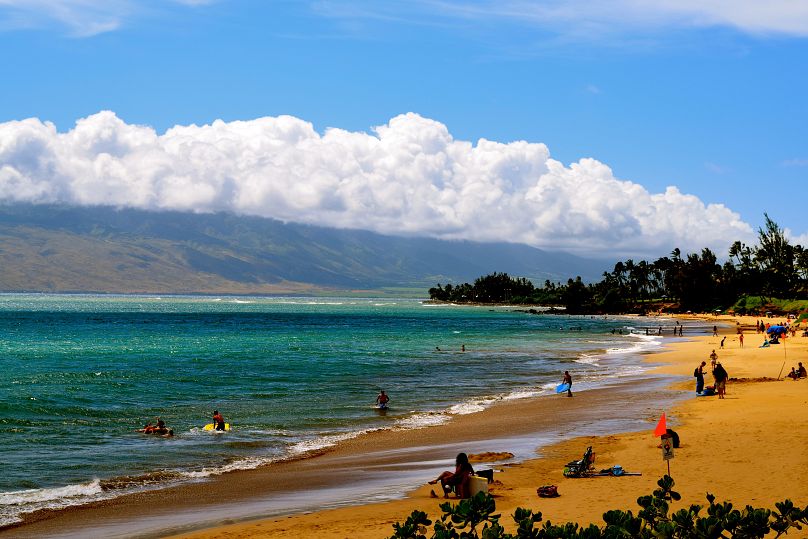
Some islands that comprise the state are best navigated by rental car, of which supplies are incredibly low. This has caused anger across the board as those who are lucky enough to hire vehicles congest important roads.
“There are so many tourists who just have not been able to travel for the past year and the pent up demand has made some people forget their manners.”
“The restaurants are all full, so people have to wait for sometimes more than an hour to 90 minutes just to get a table. The local residents, as well as the tourists , are all waiting and everyone is not happy when they are hungry and waiting.”
Hospitality workers across the state are being forced to work double time, leading to “tired and angry” workforces and dissatisfied tourists.
- Hawaii is home to the best rainbows in the world, according to science
- Cheaper than an apartment in Europe: These 6 private islands cost less than you might think
Can US visitors offset the problem?
Dr. Agrusa conducted a study of tourism in the state throughout the month of July last year, that asked hundreds of US visitors what they would be willing to do to ensure their stays benefit Hawai'i and its people.
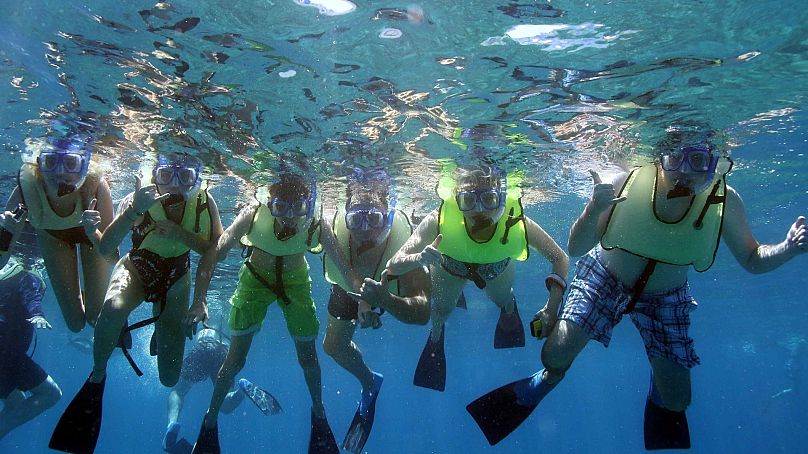
He found that some of Hawaii’s overtourism problems could be addressed in the price points US visitors are prepared to pay in order to enjoy their stay.
Over three quarters of respondents stated they would be willing to pay more to support tourism experiences that are respectful of Hawaiian culture.
Approximately four out of 10 people also said they’d be happy to increase their restaurant bills by 10 per cent if it meant the food supply chain benefitted local suppliers more.
- Venice, Florence, Skye overtourism: How residents feel about travellers’ return
- Why is the Belize Barrier Reef one of the most successful coral restoration projects in the world?
Tackling overtourism with excursion prices and public transport
Hawai'i relies heavily on the allure of its natural surroundings to make it a tourist hotspot.
Its community-first approach to island living has allowed it to remain one of the most unspoiled, ecologically diverse places in the world. Ironically, it’s these aspects that suffer the most when the islands are at capacity due to overtourism .
Its community-first approach to island living has allowed it to remain one of the most unspoiled, ecologically diverse places in the world.
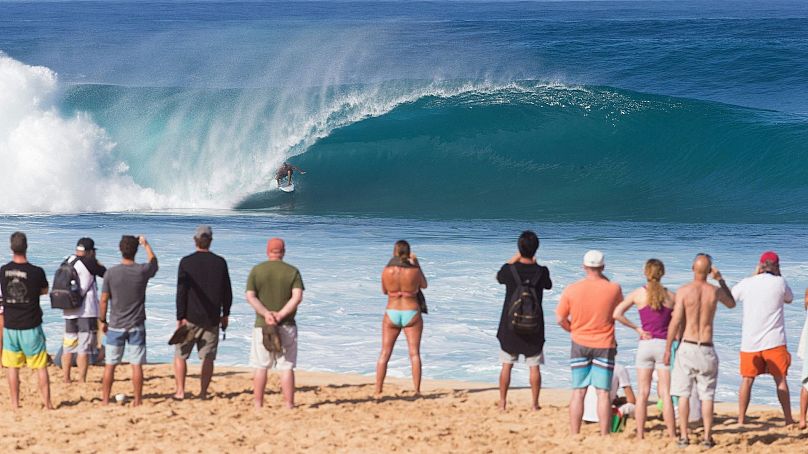
Part of the state’s COVID-19 recovery included The Hawaiian Tourism Authority awarding the it a grant of over €1,700,000 towards stewardship programmes that would “manage, conserve, and revitalise Hawaiiʻs natural resources and environment.”
It is now hard at work developing solutions to offset the problems arising from this level of demand and keep its natural resources safe.
Measures including doubling fees on popular activities for out of state tourists and a pilot shuttle bus service have already been implemented to reduce the strain on activity providers and public transport .
Guests wanting to go snorkelling at Oʻahu’s famous Hanauma Nature Bay will now be expected to pay €20 instead of €10. Many local councils are touting the idea of a “ visitor impact fee ” for other attractions, too.
It will take time to establish if a more costly trip to the island is Hawaii’s route out of overtourism.
Locals living there argue that the best way to solve this problem is for people to simply stop travelling to their homeland while it is in its current state. Financial commitments and the post-pandemic rush described by Mayor Victorino make this a near-impossible task.
You might also like
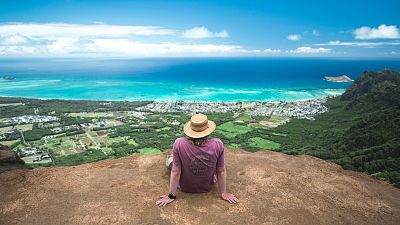
Would a 'climate fee' help prevent overtourism in Hawaii?

‘I did a home swap from Oxford to Spain and saved over €4,000’
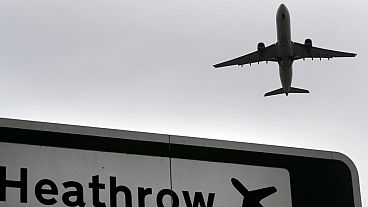
When and why are Heathrow Airport staff striking?
‘Let Maui heal’: Grieving Hawaii residents want tourists to go home
Maui’s tourism machine never stops, but residents who are reeling from wildfires need a break.
While the Maui wildfires became the deadliest in the U.S. in a century, the 1,500-acre resort hub of Wailea was salvaging business as best as it could.
South Maui properties from premium brands such as the Four Seasons, Hyatt, Marriott and Waldorf Astoria were advised to shelter their guests, keep the roads clear and use their hospitality infrastructure to support relief efforts.
With Lahaina in crisis, workers who could get to their jobs faced difficult decisions. For one dancer in luau shows, that meant deciding whether to show up for a shorthanded crew or spend time cooking and making Costco runs for displaced family members. Two of his siblings lost their homes. His wife’s auntie lost her life. In an interview with The Washington Post, the performer said he felt remorse over going into work. He spoke with the conditions that he remain anonymous and that his employer not be named to protect his night job.
Maui wildfire updates

“I shouldn’t be here,” the man said he was thinking while dancing. “Everyone that I told that I had to work, they were in shock. Like, ‘Why are you working?’ They couldn’t believe that a luau is going down. It’s embarrassing. I should be there for my community.”
As Maui reckons with catastrophe , many residents have been questioning whether the tourism businesses that fund their livelihoods should continue during a tragedy.
“There are two camps,” said Somerset Tullius, a Los Angeles resident who was born and raised on Maui and who flew home to the island the day after the fires to help her family. When she landed, she started working with the Maui Rapid Response Instagram page to coordinate relief efforts.
“One camp is, ‘Let Maui heal, we don’t need you here right now,’” Tullius continued. “And the other camp is like, ‘Hold on a second, this is my main form of income. I have to suck it up or else what else am I going to do?’”
For the luau dancer, showing up wasn’t easy.
“I could have said no, but it’s my job, and it’s my responsibility to show up for work,” he said. “But it was hard for me to do. … I wasn’t present while I was dancing. I could only think about my family.”
How to help or donate to Hawaii residents displaced by Maui wildfires
Snorkelers spark controversy
Two days after Lahaina burned to the ground, a 53-foot dive boat departed for a half-day snorkel trip about 15 miles south of the disaster site. From the highway en route to Lahaina, Miki‘ala Makanamaikalani Pua‘a-Freitas — a Maui native and the founder of Kapuna Farms in Waihe’e Valley — spotted the excursion and started recording the scene.
“Shame on this company right here — Maui Snorkeling,” Pua‘a-Freitas said in a video she posted to her Instagram account the next day. “Look at all these tourists just frolicking in the waters off of Lahaina. Unreal.”
In the more than 700 heated comments on the post, Instagram users were divided over whether tourism should go on during a tragedy.
Mark Elmore, the owner of Maui Snorkeling, insists the publicly shamed tour wasn’t actually an example of putting profits over people. The trip, he said in an interview, had been planned before the worst of the fires, and was carried out as a fundraiser. A screenshot of a receipt reviewed by The Washington Post shows a payment of $10,265.88 to the Maui Food Bank , representing 100 percent of the trip’s profit.
“It’s really hard to serve people mai tais when your family and your friends and everyone is suffering.” — Somerset Tullius, a Los Angeles resident who was born and raised on Maui
Elmore’s company is working with PR Security Service, a crisis communications and management firm that focuses on reputation repair and social media response, according to the company’s website . Maui Snorkeling has posted an apology on its website and its Facebook page . The PR firm showed The Post a screenshot of a social media message from Maui Snorkeling to a customer in which the company said it was rescheduling a tour set for the day after the fires and planned to donate all proceeds from its next booking. The message has a timestamp for Aug. 9, well before the Instagram callout was filmed.
Elmore told The Post he wished he had “telegraphed our intentions a little better.” Speaking of the criticism, he said “it came fairly quick and caught me off guard, but I certainly understand.”
For locals, however, the optics of tourists snorkeling were incredibly painful.
“The boat tours that went out to Lahaina the very next day taking people snorkeling was like a stab in the heart,” April Boone, owner of the Tropical Goddess boutique inside the Andaz Maui at Wailea Resort, said in a text message.
View this post on Instagram A post shared by Mikiʻala Makanamaikalani Puaʻa-Freitas (@kapunafarms)
Boone, who has been focusing her time on volunteering with relief efforts, says the unfolding tragedy feels as devastating as a terrorist attack. She doesn’t think visitors realize the gravity of the situation, that people working in tourism are still waiting on DNA test results to see if their loved ones were among the 106 fatalities confirmed as of Wednesday morning.
“I think people should respect the Hawaiians [and] Maui and give the locals time to grieve without having to worry about interacting with extra tourists,” Boone said. “This is not Disneyland. This is our home.”
A tourism-driven economy
Even with Lahaina in ashes, tourism is inescapable in Maui.
About 70 percent of every dollar generated in Maui can be attributed to the visitor industry either directly or indirectly, according to the Maui Economic Development Board, which calls tourism “irrefutably the ‘economic engine’ for the County of Maui.” In 2022, total visitor spending on Maui was $5.69 billion , according to the Department of Business, Economic Development & Tourism.
“To a degree we are so dependent on other people,” said Native Hawaiian Kaimanamālie Brummel, a former luxury concierge who’s now the director of advancement for Seabury Hall, a private school in Upcountry Maui.
“We’re dependent on people coming here and spending money. We’re dependent on ships coming here,” Brummel said. “We’re not growing our own food, and that’s really frustrating because we never wanted it to be that way.”
Seeing vacations continue unimpeded feels like an added blow.
“The way I’ve been framing it for a really long time is people have felt entitled to our land, to our culture, to our people, and now they’re feeling entitled to our grief,” Brummel said.
Vandalism, tantrums and narcissism: Entitled tourists are out of control
As days pass, Brummel says the community is discovering additional impacts from the fires. The area is home to many eco- and farm tourism businesses, as well as restaurants that rely on travelers’ dollars. At her school, there are students and staff who have lost everything either in the Lahaina fires or those in the Upcountry.
“We were already an isolated, under-resourced community with a lot of people living on the edge of poverty, and now we’ve had this tragedy on top of that,” she said.
‘The rest of Maui is still open’
Hawaii Gov. Josh Green (D) issued an emergency proclamation Sunday declaring that nonessential travel to West Maui was “strongly discouraged.” The proclamation noted that “visitors in West Maui have largely heeded the call to leave the island, and hotels and other accommodations are needed for displaced residents and emergency workers.”
The Hawaii Tourism Authority echoed that message in an update to its website Monday, saying that the stance is in effect through this month. It noted that hotels in the area — which includes Lahaina, Napili, Kaanapali and Kapalua — have temporarily stopped taking future bookings.
But it did not warn travelers away from visiting other parts of Maui, including Kahului, Wailea, Kihei, Hana and Wailuku. Earlier advisories from officials strongly discouraged nonessential travel to the whole island and urged tourists to leave; the narrowed focus on West Maui has led to criticism as locals and advocates ask visitors to stay away. (A spokesman for the authority, T. Ilihia Gionson, did not address a question about that criticism.)
“The lack of empathy and seeming like your vacation is more important than the tragedy … that happened in these people’s lives — that’s what’s upsetting,” said CarrieAnn Randolph, who grew up on Oahu and left Hawaii in 2013, and still has family on the island, as well as the Big Island and Maui. Her cousin lost his Lahaina home in the wildfire.
Maui County Mayor Richard Bissen said during a recent news conference that the message has been to avoid West Maui, “but the rest of Maui is still open. We’re not shut down, we’ve not shipped anyone out, we’ve not asked anyone to leave.” Green, the governor, said that if no one traveled to the island, it “would be potentially catastrophic.”
“We probably would see a mass exodus from Maui,” he said.
Tourists are still arriving, lounging by resort pools and posting about their vacations on social media.
View this post on Instagram A post shared by ʻĀina Momona | Moloka’i (@ainamomona)
Tullius said Maui’s dependence on tourism is “very complicated” because workers need to earn money but may also resent visitors for enjoying themselves during such a dark time.
“It’s really hard to serve people mai tais when your family and your friends and everyone is suffering,” she said.
Actor Jason Momoa, who was born in Hawaii, has been one of the most prominent figures to join the chorus of local voices discouraging tourism.
“Maui is not the place to have your vacation right now. DO NOT TRAVEL TO MAUI,” he recently posted on Instagram . “Do not convince yourself that your presence is needed on an island that is suffering this deeply.”
Callback to covid
The pleas are reminiscent of a widespread sentiment felt during the pandemic. Two years ago, as coronavirus cases rose, then-Gov. David Ige (D) asked tourists to stay away. Residents implored the visitors who did come to be respectful amid a spate of bad tourist behavior, including faking vaccination cards and trespassing into clearly marked private property.
That summer, as locals grappled with a water shortage and restrictions on Maui, “stop coming” became a rallying cry on social media. The county’s mayor asked airlines to bring fewer visitors as restaurants and other businesses struggled to keep up with an influx of tourists, the Associated Press reported .
But even with a mandatory 14-day quarantine in place from March to October 2020, then a longer-lasting “Safe Travels” program with protocols that required testing or vaccination , mainlanders continued traveling to Hawaii en masse .
“This conversation intensified during the pandemic, but has been happening for decades prior, possibly since the beginning of the hospitality industry in Hawaii,” said Maui-born Kainoa Horcajo , a cultural adviser and founder of Mo‘olelo Group, a consulting firm specializing in Hawaiian culture and communications.
With the fires intensifying the conversation yet again, Horcajo has heard from both sides of the issue including some calling for a total shutdown of the tourism industry. He understands the argument but believes it would impact “massive amounts of people,” “and that’s creating another disaster where there was just one,” he said.
Business as usual?
With such arguments looming, tour operators find themselves in a double bind.
“There are so many people that have just taken off work, they’ve spent down their vacation days or their companies just closed up out of sensitivity, and they’re asking themselves, ‘We got to open back up. How do we do it in the right way?’” Horcajo said. “I don’t think there is a blanket approach.”
Pua‘a-Freitas, who shared the video of the Maui Snorkeling tour, emphasized she is not opposed to tourism, but called for sensitivity.
“People will never be able to look at these beaches, these waters, these places, these spaces that brought us so much joy and happiness,” she said. “It’s also a place of remembrance for a lot of pain. We can’t just be like, ‘Oh, a few days passed, let’s go back to what we were doing.’ I’m sorry, we’re going to have to all pause and really move forward with a better conscience.”
Helen Taras, office manager of Hana Tours of Maui, says the company began running tours this weekend after being closed for a few days out of respect. “We’re heartbroken about what’s happened, but we also want to help people keep their jobs so we can help them and they can help their family and friends,” she said.
Send us your Maui memories
Kevin Ditamore, co-owner of the tour operator Adventure Maui, said that while his company will be donating 20 percent of the proceeds from Maui bookings for the rest of the year, they’re struggling.
“Just about everything for the first week [of the fires] was canceled, so that was a significant loss,” said Ditamore, who’s lived back and forth between Maui and Kauai for 25 years. He started his business in Lahaina; the office he rented in 2002 is now gone, as are two of the houses where he once lived.
“This also really hurts because it’s coming on the heels of the covid pandemic where we were all closed for a year,” Ditamore added. “We were just in full-blown recovery, and when this happened, it really hurt.”
Horcajo says every individual and family may have to decide for themselves what’s right. That includes tourists.
If someone does want to keep their trip to Maui, Brummel asks them to do so with empathy. Even if they’re staying in or visiting parts of the island that weren’t burned, everyone on the island has been affected heavily. “We are trying to figure out how to welcome and host people while trying to reconcile what this means for our community,” she said.
It’s not the time for a standard beach vacation, she added. Only come if you’re ready to respect the culture in addition to the island’s physical beauty.
“I need people to know that culture is based on this land and the people who live here,” she continued. “You can’t like the culture and the food without loving the people.”
A previous version of this article misstated when the Maui Rapid Response Instagram page was founded and who founded it. Nicole Huguenin started it in March 2020 for pandemic relief efforts. Somerset Tullius is a contributor. This version has been corrected.
Wildfires in Hawaii
What’s happening: After the deadly wildfire in Maui devastated the town of Lahaina, people search for their loved ones as they face the devastation of losing homes , schools and businesses .
How did the fires start? Officials have not announced a cause, though video and data shows it was probably power lines . The spread of nonnative grasses and hurricane-stoked winds could have been factors, along with the indirect influence of climate change .
What areas have been impacted? Fires burned across multiple Hawaiian islands — these maps show where . The town of Lahaina on the island of Maui suffered widespread damage, and historical landmarks across the island were damaged . These photos show the extent of the blaze .
Can I help? Many organizations are accepting donations to assist those affected by the wildfires. Visitors returning to West Maui are encouraged to practice regenerative tourism .

Community Voice
How Molokai Can Respond To Tourism, Gentrification And Inequity
As the world's special places continue to disappear, this island home’s ability to cling to its values is of important relevance.
By Todd Yamashita
April 20, 2022 · 4 min read
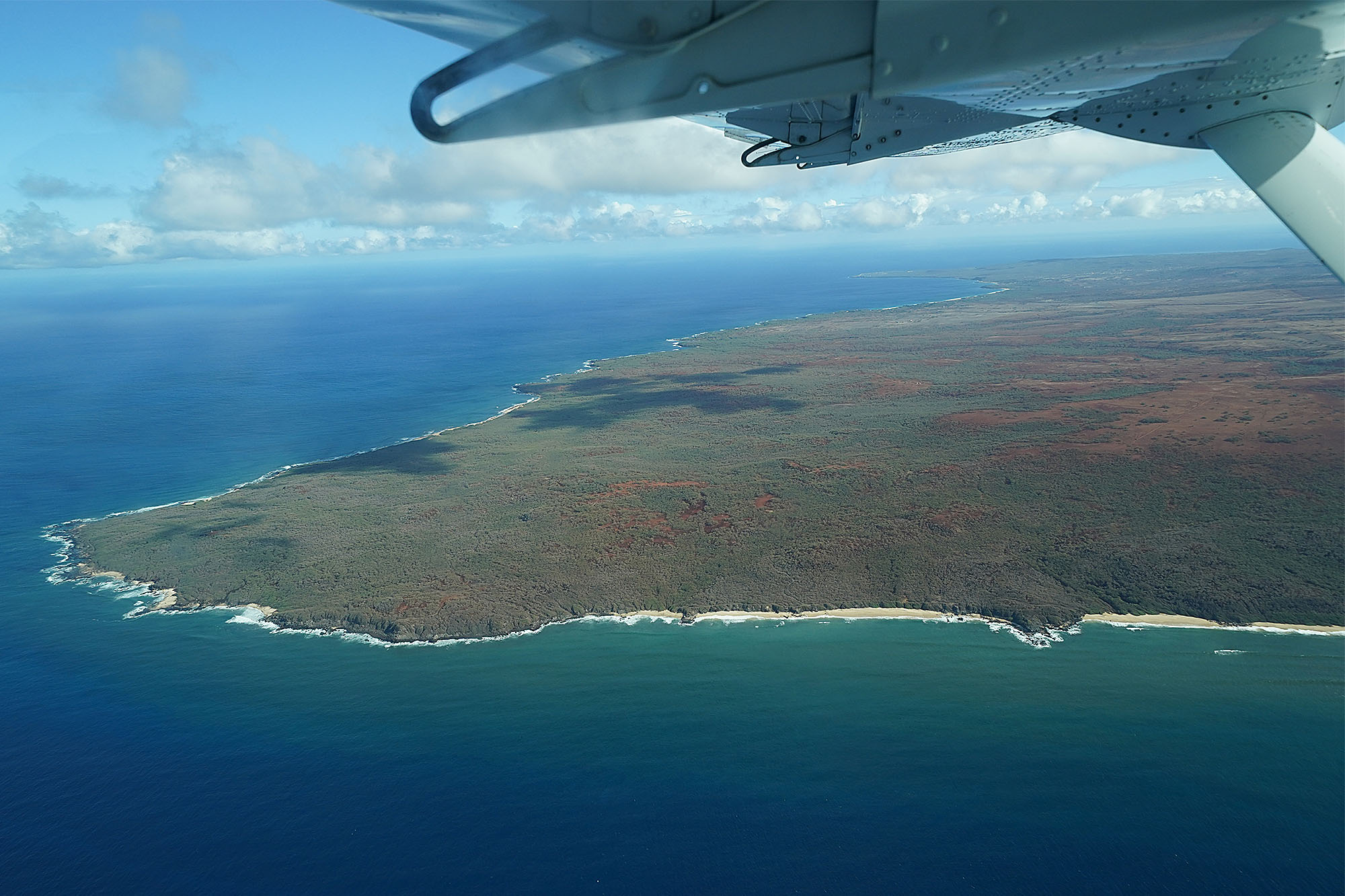
About the Author

Todd Yamashita
What’s missing from the map below? Hint: It’s the island of Molokai.

The map image is made from parts of an old Hawaii postcard deconstructed and reconstructed to emphasize my point.
Much more than ever, when people hear I’m from Molokai they remark on how it must be special to come from a place where visitors need to be invited.
When I first began to hear this more than a decade ago, I was polite about the small island of Molokai with its population of 7,400, being possibly confused with the privately owned island of Niihau that hosts a population of roughly 130 Hawaiians. Was it confusion?
A bold hand-painted sign in town reads “Tourists Not Welcome.” The other side of the sign reads “Visit, Spend, Go Home” and faces outgoing visitors heading back toward the Hoolehua airport. It’s been a few years now and the sign continues its prominent display from a homestead lot by the highway.

Before you get on the bandwagon of discussing the civility of this particularly polarizing sign, let’s instead realize it is a symptom of a community under pressure.
I’m here to report that the reintroduction of tourism after a two year hiatus has created an anxious response from this community.
The root cause? Gentrification.
Let me explain.
‘Stubborn Resilience’
Look on Zillow. There are no single-family homes available for sale because the urban exodus created by remote work has led people to relocate here.
We have one airline we can no longer afford. Tourists eager to return have snatched up every discounted seat weeks and sometimes months ahead. More so than ever, locals who need to book essential travel are lucky to find an open seat at all.

Residents like me who work part time off island no longer have that option. Members from my own family have had major medical procedures set back by months due to seat availability and scheduling issues.
If you know Molokai, however, you know about our stubborn resilience. We are also known to be resourceful.
Over a dozen community members and leaders including state Sen. Lynn DeCoite, Maui County Council Finance Chair Keani Rawlins-Fernandez and Hawaiian rights activist Walter Ritte came together recently as participants of the Destination Management Action Plan or DMAP, a statewide project administered by the Hawaii Tourism Authority.
The conversation was, yes, heated at times (this is Molokai, folks). But when it finally carried on after several hours of debate, this scrappy group came up with something quite surprising.
The Molokai group, in meeting overtime, listed at least three items worth highlighting:
- that Molokai, as a destination, be removed from all future HTA marketing efforts;
- that the single HTA position on Molokai, that was axed during the pandemic, be restored; and finally
- that HTA support community efforts in understanding visitor impacts in order to determine Molokai’s visitor capacity.
The final overarching ask? That these ideas be brought directly out of committee to the general public so that the community here can engage and decide what is best for itself.
But will Molokai disappear if removed from the map?
Molokai had the lowest unemployment in the state during the pandemic. Sustainable Molokai, a local NGO known for its broad-reaching sustainability efforts, has doubled its employee base to over 30 people with other organizations following their lead.
We are witnessing the return of our youth engaged in islandwide community building efforts that include conservation, agriculture, renewable energy and workforce development.
Caring for the people, places and the things we love — we are stubborn about that, too. As the world’s special places continue to disappear, Molokai’s ability to cling to its values is of important relevance.
Molokai’s ability to cling to its values is of important relevance.
Indeed Molokai is removing itself from one map and placing itself onto another. A map that points to a place that isn’t necessarily a destination, but a place that is more well known: home.
I can’t claim to know how things here will work out. But I do know, like us, there are communities all over Hawaii suffering the deep impacts of tourism, gentrification and inequity.
This is just to let you know we’re in it, too. That perhaps there are creative alternatives to this idea that Hawaii needs to be a destination for someone else, from somewhere else.
--> Sign up for our FREE morning newsletter and face each day more informed. --> Sign up for our FREE morning newsletter and face each day more informed.
Community Voices aims to encourage broad discussion on many topics of community interest. It’s kind of a cross between Letters to the Editor and op-eds. This is your space to talk about important issues or interesting people who are making a difference in our world. Column lengths should be no more than 800 words and we need a photo of the author and a bio. We welcome video commentary and other multimedia formats. Send to [email protected] . The opinions and information expressed in Community Voices are solely those of the authors and not Civil Beat.
Read this next:

Hawaii Legislature Should Improve Earned Income Tax Credit
By David Gierlach · April 21, 2022 · 4 min read
Local reporting when you need it most
Support timely, accurate, independent journalism.
Honolulu Civil Beat is a nonprofit organization, and your donation helps us produce local reporting that serves all of Hawaii.
Todd Yamashita is a fourth-generation resident of Molokai and father of two boys. He sailed on the Hokulea Worldwide Voyage, is board president of Hoahu Energy Cooperative Molokai, publisher of the Molokai Dispatch, Molokai operations manager for Hawaii Marine Animal Response, and is a published children's book author, an instructor, and curriculum developer for Molokai youth.
Latest Comments (0)
Reading your bio you are a real asset to your community and global society as a role model. Problem you know is the lethargy of community members that don't want to work bringing everything down. We all gotta keep working bit by bit, and we all gotta let go of the enticing vices to get to what is real, really good for ourselves, our community, our society. Keep up the good work. consider recruiting a few pilots and start a charter service. Offer one week eco-learning to schools around the globe to come share culture with y'all.
time4truth · 2 years ago
Best keep holding hta's feet to the fire to ensure that these changes spoken about are brought forth ASAP.
Scotty_Poppins · 2 years ago
Molokaiâs problems are a microcosm of dramatic structural problems in Hawaiâi and other tourist zones. The dramatic side effects of overtourism -and increased global mobility - of capital are becoming mainstream. You describe it really well. If we want to fight this, as communities in Hawaiâi Nei, we need to "act local" . And I think we also need to "think global" and tackle the larger systemic issues. Otherwise there is a danger of Molokai becoming another community simply wanting to hide from this world, suppressing the real issues.
Keaukaha · 2 years ago
About IDEAS
IDEAS is the place you'll find essays, analysis and opinion on every aspect of life and public affairs in Hawaii. We want to showcase smart ideas about the future of Hawaii, from the state's sharpest thinkers, to stretch our collective thinking about a problem or an issue. Email [email protected] to submit an idea.
You're officially signed up for our daily newsletter, the Morning Beat. A confirmation email will arrive shortly.
In the meantime, we have other newsletters that you might enjoy. Check the boxes for emails you'd like to receive.
- Breaking News Alerts What's this? Be the first to hear about important news stories with these occasional emails.
- Special Projects & Investigations What's this? You'll hear from us whenever Civil Beat publishes a major project or investigation.
- Environment What's this? Get our latest environmental news on a monthly basis, including updates on Nathan Eagle's 'Hawaii 2040' series.
- Ideas What's this? Get occasional emails highlighting essays, analysis and opinion from IDEAS, Civil Beat's commentary section.
Inbox overcrowded? Don't worry, you can unsubscribe or update your preferences at any time.
I'm a native Hawaiian. Locals are tired of tourists treating the island like a theme park – here's what to know before you visit.
- Keani Rawlins-Fernandez grew up in Hawaii and has seen tourism increase over the years.
- Now a local council member, Rawlins-Fernandez says locals can feel overrun by tourists.
- She said her advice for tourists is to be respectful and not entitled.

This as-told-to essay is based on a conversation with Keani Rawlins-Fernandez, a vice chair of the Maui County Council, about how tourism has affected her life in Hawaii. The following has been edited for length and clarity.
The tropical islands of Hawaii have long been a dream destination for tourists, drawn by the pristine beaches, vibrant culture, and an "aloha" free spirit. But for me it's home.
Many economic, social, and financial issues arise with unrestricted tourism, and I don't know how Hawaii will continue to cope with these numbers.
I grew up in Molokai, the only island of Hawaii where the economy is not reliant on tourism . Here, agriculture and farming are our main industries.
As a policymaker, I use my platform to fight against unrestricted tourism, counteract our current housing crisis, and campaign to protect our ocean and reef health.
It's my responsibility to advocate for my local community
When I was growing up, big corporations fell in love with the white-sand beaches, canoes, and divers and transformed our land into a shoreline of resorts like Waikiki in Oahu. They attempted to do this in Molokai, but the community fought it.
I went to law school to become a policymaker because it was my kuleana — responsibility — to advocate for my community the same way my elders did.
I was inspired by the work of Uncle Walter Ritte, a Native Hawaiian activist and educator who protested the military bombing practices on Kaho'olawe and won its eventual return to Native Hawaiian control from the US military.
I hold the County Council seat for the Molokai residency area and am part of the Efficiency Solutions and Circular Systems Committee, where I can discuss high-level budgets and allocation of resources to solve economic inequality that has been around for generations.
Tourism has displaced Native Hawaiians by driving up costs
The number of tourists in Hawaii is overwhelming the local population and threatening the islands' cultural heritage.
Native Hawaiians, already displaced from their lands during colonization, are experiencing a housing crisis. When houses become available, they are bought by tourists instead of locals .
Related stories
People are buying our land as investment properties, so our Kanaka 'Ōiwi — locals — are forced to move further out , and they can't maintain their local traditions or routines. Basically, they need to start over and make a new place their home.
The cost of living has skyrocketed as demand drives up real-estate prices. Residents of islands like Maui and Oahu, where tourism is at peak levels, rely on resorts and hotels for jobs to support their livelihood.
During COVID, there was no tourism, and their jobs were the first to go. My island in Molokai fared better because the model is to cater to local businesses and local patrons instead.
We can't commute easily because tourists are getting their sunset pictures
A large part of Hawaii's economy is reliant on tourism, but in popular tourist areas, overtourism is placing huge strains on the infrastructure and environment — especially when the number of visitors exceeds the resident population.
For example, famous sights like Waikiki Beach and Diamond Head on Oahu draw crowds of tourists for sunrise or sunset views. This clogs up our highways during the hours when locals are trying to commute or drop their kids off at school.
The state Department of Transportation wants to create more parking spots or widen highways. Instead, people should consider group trolley systems like the ones in Zion National Park in Utah, which I recently visited, to manage tourists. This makes more sense than allowing tourists to rent their own car for the duration of their visit.
Locals feel like their home is a theme park — and it can be dangerous
Our locals feel like their homes are treated like a theme park and there's no more privacy.
We've heard stories of tourists trespassing on properties for photo opportunities. But they need to understand that unlike television or social-media posts, this is real life.
There aren't always safeguards and railings at places like our waterfalls or volcanoes. Tourists have passed away or become severely hurt. It puts our emergency responders at risk if tourists are trespassing in dangerous places.
Our beaches and reefs are being degraded for the sake of tourism
Excessive tourist activity is also taking a major toll on Hawaii's fragile island ecosystems.
For instance, the natural sand dunes in Hawaii enable a cyclical restoration of the white-sand beaches. However, the construction of resorts and hotel chains on the dunes disrupts this cycle, preventing the beaches from replenishing lost sand. With the dunes unable to supply fresh sand, the beaches steadily erode away.
I've seen temporary seawalls being built in front of condos and resorts which interrupt the natural cycle of sand migration. We see how degraded our coral reefs, essential for marine wildlife, are in the face of pollution, sunscreen toxins, and careless snorkelers.
We are islands, and we don't have that much land to bury trash in landfills, so excessive rubbish ends up in our waters and damages the ecosystem.
Tourism has perks, but it needs to be managed better
There are some positives to the steady increase in tourists, like those tourists who volunteer with the Red Cross. However, extractive tourism needs to stop. I also want our community to rely on other jobs, because tourism ebbs and flows.
My message to tourists is to visit responsibly, respect local culture, and minimize one's footprint. Support local businesses over chain restaurants, go on tours instead of taking your own or a rented vehicle, make sure you're staying at a legitimate Airbnb or VRBO, and come with respect and gratitude, not entitlement.
Watch: Video shows the devastation from Hawaii wildfires
- Main content
Hawaii Top Things to Know Explore Now →
Kauai Guide
Big island guide, essential travel tips.
- Which Island to Visit? →
- Best Time to Visit →
- Hawaii Must See & Do →
- Hawaii Itineraries →
Travel Information
- Hawaii Weather →
- What to Pack? →
- Best Hawaii Island to Visit →
- Hawaii Safety Tips →
Hawaii Resources
- Hawaii Airports & Terminals →
- Hawaii Maps →
- Hawaii Travel News & Blog →
- Hawaii Visitor FAQ →
View our Hawaii Visitor Guides →
Hawaii Accommodations →
Lodging by island.
- Oahu Lodging
- Maui Lodging
- Big Island Lodging
- Kauai Lodging
Where to Stay
- Where to stay on Oahu →
- Where to stay on Maui →
- Where to stay on Big Island →
- Where to stay on Kauai →
When to Visit
- Best Time to Visit Oahu →
- Best Time to Visit Maui →
- Best Time to Visit the Big Island →
- Best Time to Visit Kauai →
Explore Hawaii Hotel Deals & Specials Search Now
- Hawaii Things to See & Do →
Tours by Island
- Big Island Tours
- Kauai Tours
Hawaii Attractions
- Oahu Attractions →
- Maui Attractions →
- Big Island Attractions →
- Kauai Attractions →
Hawaii Must See & Do
- Oahu Must See & Do →
- Maui Must See & Do →
- Big Island Must See & Do →
- Kauai Must See & Do →
Explore all Hawaii Tours Search Now
Hawaii Reopening to Visitors
Safe Travels to end March 26, 2022 for domestic travelers

Handpicked Tours & Activities
Discount Hawaii Car Rentals
Hawaii Reopens to Tourism
Things to know about visiting a reopening hawaii, pre-travel testing program now allows the bypass of quarantine, last updated: march 1, 2022, at 6:30 pm hst, 'safe travels' program ends march 25th for domestic travelers .
According to Governor Ige, the state of Hawaii will drop the current 'Safe Travels' program for domestic travelers at midnight on March 25, 2022 . The governor made the announcement on Tuesday - March 1st. Governor Ige continues to urge people to continue taking precautions, and a decision on the mask mandate will follow.
Under the new guidelines, the first-day travelers could visit the state without Safe Travels restrictions will be March 26th .
That now means beginning March 26, 2022, domestic travelers to Hawaii will no longer need to fill out online forms via Safe Travels, no longer have to worry about QR codes, no longer have to provide proof of vaccination, and ultimately, there won't be any additional requirements or restrictions to fly to Hawaii on a domestic flight.
Quicklink Hawaii Resources
- More information on the current travel rules & restrictions can be found on our updated page for: Hawaii Travel Restrictions →
- A complete list of the trusted travel partners, for pre-travel testing, can be found here: Hawaii Trusted Travel Partners & Test Costs →
- Details and thorough information on Hawaii's pre-travel testing can be found on our: Hawaii Testing Requirements & Test Procedures →
- Additional details on Hawaii's policy for vaccinated travelers can be found in our updated article: Hawaii COVID-19 Vaccination Policies →
- Detailed information on Hawaii's use of Health/Vaccine 'passports' can be found in our article: Hawaii Vaccine & Health Passport Travel →
- We've created a page dedicated to the day-by-day updates that are occurring within Hawaii: Hawaii COVID-19 Travel News & Headlines →
Editor's Note...
Hawaii's re-opening has honestly been an evolving process with numerous changes and ongoing updates. We recognize that this, unfortunately, causes confusion to potential travelers, and we are continuing to monitor this situation closely. We will provide additional updates here regularly , from official sources , on this page as additional information becomes available to us. We also encourage our readers to sign up for our 'Hawaii Travel Update' emails to receive pertinent information on all of the recent developments regarding travel to Hawaii.
— article continued below —
2024 Hawaii Visitor Guides
Visiting Hawaii soon? Be sure to grab a copy of one of our updated Hawaii Visitor Guides .
~ Trusted by Millions of Hawaii Visitors Annually ~

Hawaii Cruiselines Status
Can i take a cruise around or to hawaii.
For more information on Hawaii Cruises & Sailing, including what each cruise line in planning for Hawaii, view our Hawaii Cruiselines Status Updates →
Hawaii Attractions & Parks
Are state and national parks open.
Generally speaking, yes, most state and national parks are open at this time. For additional information, we've recently created a new article about Hawaii Attractions & Parks - What's Reopening?

Hawaii Hotels, B&B's, and Inns
What accommodations are open, closed, and re-opening soon.
For more information on Hawaii Hotels, Resorts, B&B's, Inn's and other accommodations, including when each is planning to re-open for visitors, visit our section on Hawaii Hotels - What's Open, Closed, and Reopening Soon →
Search Hawaii Flights
It's easy to plan and book your perfect Hawaii trip. Enter your trip dates to search Hawaii vacation packages, hotels, flights, and car rentals.
- Rental Cars
Information Disclaimer: Details and information on this page, including dates, may change on a day-by-day basis. While we will be making every effort to keep these pages relevant and up to date, the decision to travel is ultimately your own responsibility. Please travel safely and keep an eye on our Hawaii Travel Requirements page for more information regarding COVID-19 and re-opening in Hawaii.
Terms of Use & Disclosures
This website's use is your expressly conditioned acceptance of the terms, conditions, and disclaimers found within our Disclaimer of Warranty and Limitation of Liability page without any modifications. Your use of this website constitutes your acceptance of all the terms , conditions, and disclaimers posted herein. If you do not agree with any part of these terms and conditions, you should not use this website. We also receive a small commission from travel partners for some of the links found on this website. All partners and related links comply with our Advertising Disclosures . For example, as an Amazon Associate, we earn from qualifying purchases. These links do not cost you anything and help provide the necessary funding to maintain this website. Mahalo!
Download our Hawaii Map Packet
Includes most major attractions, all major routes, airports, and a chart with estimated driving times for each respective island..
Our popular Summary Guidesheets are now included.
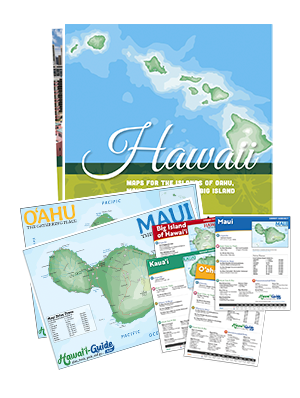
Download your copy of our... 2024 Hawaii Travel Guide
Hawaii-Guide.com has been featured in...

Hawaii Visitor Information...

Try out our new AI Powered Search & Chatbot →

Plus & Premium Benefits
Donate and remove ALL the ads
Mahalo for your support!
By donating to our small business, you accept and acknowledge the donation terms . Mahalo!
Advertisement
‘There’s just a sense of entitlement’: Hawaiians worry about a flood of heedless tourists.
For much of the pandemic, Hawaii had some of the strictest rules for visitors in the United States. But now testing can replace a quarantine in most areas.
- Share full article

By Melina Delkic
- Published March 29, 2021 Updated June 11, 2021
Palakiko Chandler took their little cousins to Nanakuli Beach on Oahu last weekend and noticed something they hadn’t seen in a while: a parking lot full of rental cars. The tourists were back.
“It was just so packed,” said Mr. Chandler, 27 and a Native Hawaiian. “Me and my cousins were looking at each other like, should we just go home?” The youngest cousins needed several reminders to keep their distance from strangers for virus safety.
For much of the pandemic, Hawaii had some of the strictest rules for visitors in the United States, requiring a 14-day quarantine for everyone arriving in the islands. The policy took a heavy economic toll on a state that depends heavily on tourism, but it was lauded for its success in limiting the impact of the virus for months.
Now, though, Hawaii has reopened for travelers: A negative test within 72 hours of arrival lets them skip the quarantine in most places. At least 28,000 people arrived in Hawaii on each of the last two Saturdays, according to state travel data — the most in a day since the pandemic began, and not far from typical prepandemic levels.
The influx has residents worried. Some have been posting on social media for months, pleading with mainlanders not to come, or if they do, to be mindful of the islands’ isolation and limited resources. The state has a total of 3,000 hospital beds for its population of 1.4 million, and has among the fewest I.C.U. beds per capita of any state; they were often mostly full even before the pandemic.
Hawaii’s precautions did not keep the virus out completely: The islands had a holiday surge, like the rest of the country, and parts of the state are struggling with outbreaks now. Daily new case reports have doubled since late February, with some recent clusters focused on tourism workers . Hospitalizations have increased 17 percent in the last two weeks.
“The looming concerning things are the variants,” said Dr. Damien Kapono Chong-Hanssen of the Kauai Community Health Center. “The California variant has been implicated in what’s happening in Maui right now. Maui is not looking better.”
Mainlanders are making the trip anyway. “Hawaii is again packed with tourists,” wrote the travel site The Points Guy. Favorite sites are sold out, check-in lines are long, and the lines for outbound flights are getting longer .
Tourists are crowding popular beaches without wearing masks or paying much attention to social distancing. Some visitors have gotten rowdy. A pair of arriving tourists were sent home after trying to pay a bribe to avoid the testing requirement.
The situation is worsening the irritation that many state residents feel toward vacationers. Now the tourists aren’t just crowding the island and driving up prices, they say, they are also heedlessly risking everyone’s health.
“Hawaiians and locals alike have always seen the disrespect that tourists bring to our islands,” Mr. Chandler said. “This is kind of the last straw. You’re coming to our home and you’re endangering us during a pandemic.”
The tension is especially prevalent among Native Hawaiians and Pacific Islanders, who face greater risk for Covid-19 and higher rates of chronic disease than average.
“Local people are tired of being treated a certain type of way,” said Charles Kaua Taylor-Fulton, 20, who lives on Oahu. “When tourists come, they can be very rude or entitled. There’s just a sense of entitlement.”
Dr. Lee Buenconsejo-Lum of the University of Hawaii at Manoa said the state’s case numbers are not exploding, at least not yet. But she said she would like to see travelers exhibit the same commitment to wearing masks that locals have . “It’s a matter of constantly educating the tourists,” she said.
Still, the high travel season is just getting started, and restrictions are continuing to ease. Bars have reopened in parts of the state and outdoor weddings are now allowed to welcome up to 100 guests .
“We can already see into the future of summer,” Mr. Chandler said, “and it’s going to be packed.”
Melina Delkic writes the Asia Briefing newsletter. More about Melina Delkic
Fearful of 'Covid 2.0,' Maui business owners say they welcome tourism

LAHAINA, Hawaii — Nearly two weeks after deadly wildfires burned much of west Maui to the ground and left more than 100 people dead, the island remains open for business, say workers and shop owners who rely on tourism to pay their bills.
But their desire to keep visitors coming has sparked tensions with residents who say now is not the time to travel to the island.
“We’re really in pain, but I have no trouble with a customer coming in with a smile on their face,” said Panna Cappelli, whose art gallery on Front Street and the work of some 200 local artists were all but destroyed when the historic town of Lahaina was leveled.
Cappelli has three galleries on other parts of the island that were not affected by the fire, and said she cannot afford to pay her employees or donate to Lahaina residents if customers don't continue shopping: “I need them to buy something."
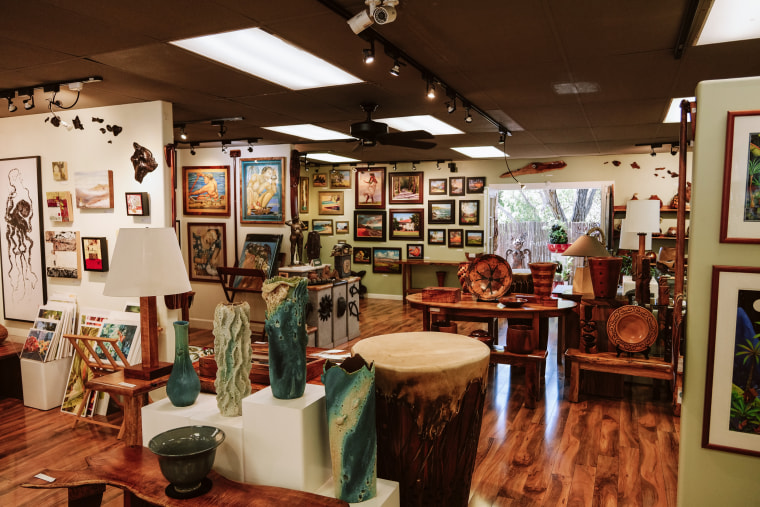
Unsurprisingly, tourism has taken a hit since Aug. 8 when wildfires turned everything in its path to ash, forcing evacuees to jump into the ocean to escape the flames and leaving hundreds of friends and loved ones unaccounted for.
Airline passenger numbers to Maui fell 80% this week compared to the same time last year, according to the Hawaii Department of Business, Economic Development and Tourism. It estimates Hawaii’s economy has lost some $8.5 million in sales revenue each day since the wildfires erupted on Maui and the Big Island.
The total economic damage and cost could total $7 billion, Moody’s Analytics said in an initial estimate, which called the price tag “astronomical” and suggestive of a "brief but severe local recession.”
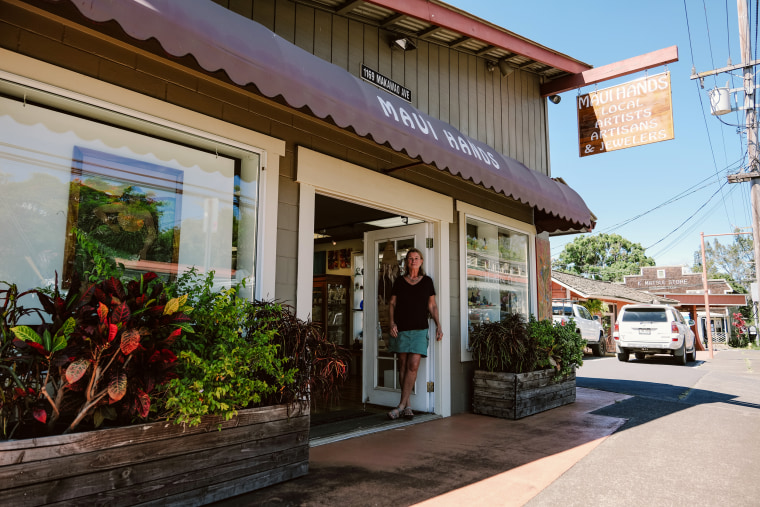
'Respect what is happening'
Many business owners and their employees say the only way to help the community heal is by aiding Maui’s economic recovery. That means continuing to welcome outsiders to the island.
“Come to Hawaii, but also respect what is happening,” said Maui resident Jon Baker, who owns and operates a rental car business near the normally bustling Kahului Airport.
“If you don’t see the typical aloha, it’s only because people are hurting and grieving,” he continued, referring to the spirit of love and community in Hawaiian culture. “We rely on tourism. We need it.”
Baker, who was born on Oahu and has lived on Maui for 17 years, said business has been at a “complete standstill” since the wildfires broke out. His fleet of 60 cars is sitting unused in the lot except for the six he has loaned out, free of charge, to families who lost theirs in the fires.
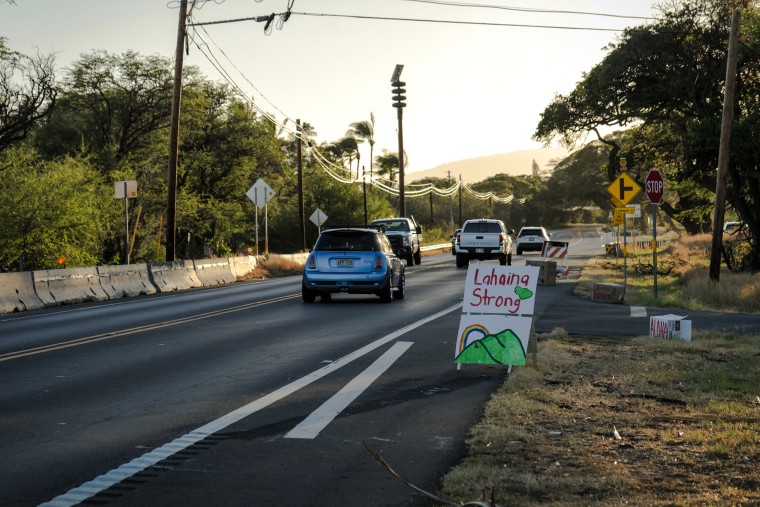
To make ends meet, Baker is working with his bank to forgive monthly loan payments for three months as he contributes to the island's economic recovery by staying open while continuing to provide free rentals to those in need.
“Financially it doesn’t help us at all with our business,” he said. “It’s kind of insane, but it’s really about caring for people.”
Last year, 2.9 million tourists visited Maui by air, according to the Hawaii Tourism Authority. They spent $5.82 billion annually, compared with $4.04 billion in 2021 during the height of the pandemic.
Prior to Covid , Hawaii's tourism industry had been in transition as officials worked to build better relationships with local communities and create more sustainable infrastructure. The pandemic and its many restrictions halted some of that progress, but this year there was an influx of visitors and an uptick in tourist spending.
Maui’s comeback felt like a sure thing as people weary of public health restrictions flocked to vacation destinations across the globe.
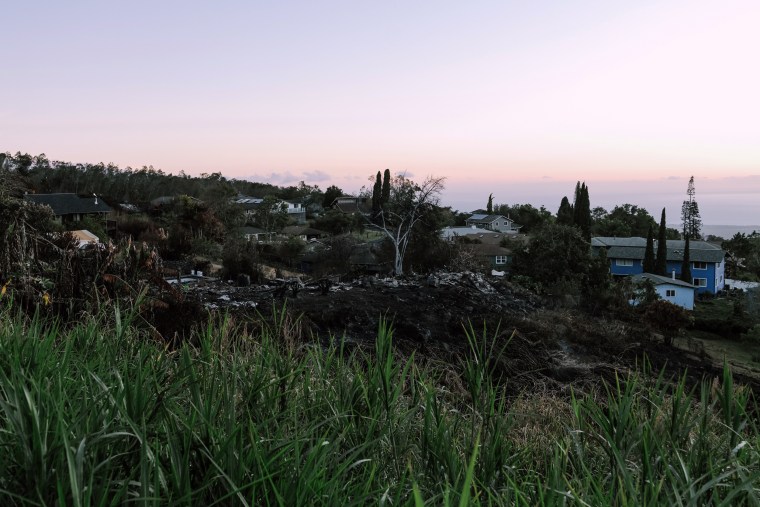
10,000 jobs lost to the fires
But state tourism officials warn that as many as 10,000 jobs have been lost as a direct result of the Maui wildfires. Visitor spending losses are estimated at $1.05 million a day, and household income loss is estimated to top $535,500 a day, according to the Department of Business, Economic Development and Tourism.
"It’s a fine line. It’s a fine balance," said Ilihia Gionson, spokesman for the Hawaii Tourism Authority. "At the end of the day, for those people who want to be working, we want to make sure they can be working. What we don’t want to see is people losing their homes and then losing their jobs."
After the fires, state officials gave conflicting messages about whether to keep or cancel trips to Maui. An early emergency proclamation by the governor's office barred nonessential travel to the island, but it was adjusted a few days later to apply only to west Maui.
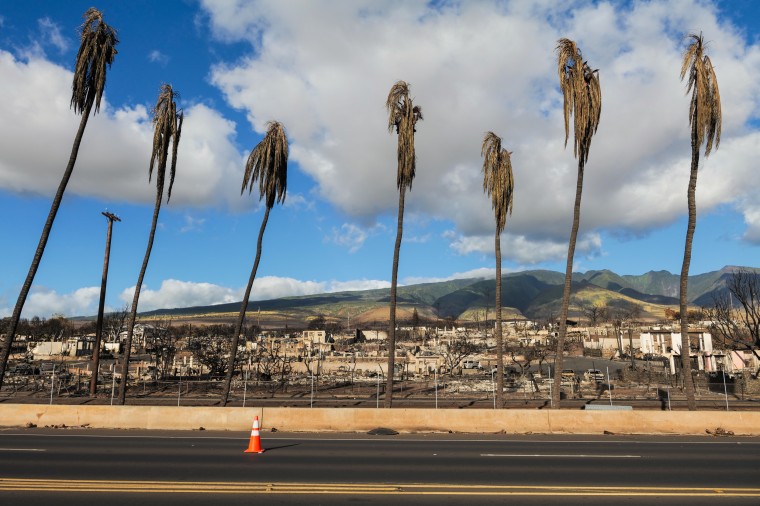
Still, locals and high-profile celebrities like the actor Jason Momoa warned visitors on social media to avoid the island out of respect for victims and survivors.
“That is the wrong message,” said Maui-based wedding photographer Tara Lee Murphy, who shot a ceremony on Lahaina’s beachfront just hours before the venue was devoured by flames. “We want to keep working to keep Maui open. We don’t want Covid 2.0.”
Speaking to reporters after the fire, Hawaii Gov. Josh Green said the pandemic has also forced state officials to weigh the public health risks of allowing tourists in against the economic harm of keeping them out.
“Like we saw in the pandemic, decisions we made can affect everyone across the islands," Green said in a statement. "So what we’re saying now is travel should not be to west Maui. But the other parts of Maui are safe.
"And the rest of the state, of course, is also safe.”
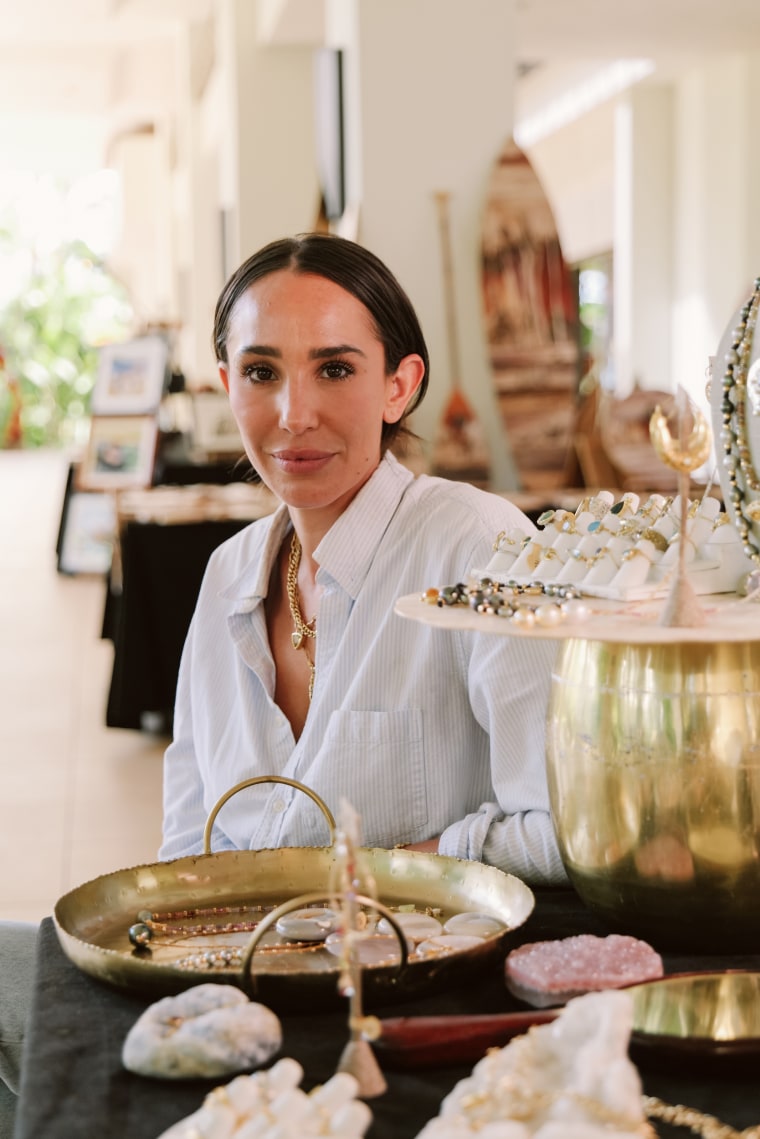
Standing alongside a glittering row of necklaces, rings and bracelets at a luxury resort in Maui’s Wailea Beach, island native Aysha Nitze helped customers try on jewelry that she and her mother had made.
She depends on high-end clients to keep operating her small business and said sales are down about 90% since wildfire leveled Lahaina, about 45 minutes away.
The resorts where she typically sets up her handmade creations have transformed into headquarters for emergency personnel, filled with employees from FEMA, the Red Cross and other agencies.
“They’re not buying anything,” she said, adding that it’s “shortsighted” to tell tourists to avoid Maui.
“We can’t all lose our houses because one town was devastated,” she added.
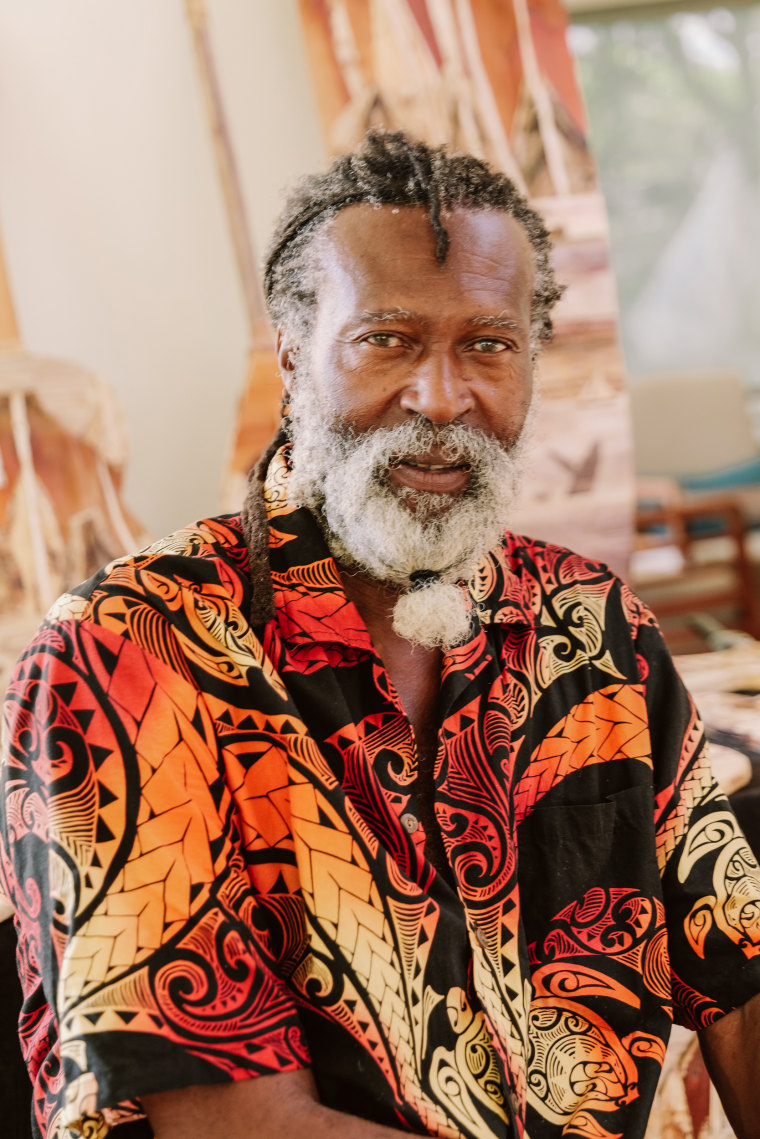
At his stand next to Nitze’s, artist Baz Cumberbatch tugged at a thick sheet of bark. Cumberbatch creates natural landscapes on plywood from locally sourced materials, such as palm and banana trees, selling his wares at beachfront resorts and local art galleries.
He usually makes $800 to $1,000 a day but has been averaging $200 since the Lahaina fire destroyed Cappelli's gallery that showcased his work. Cumberbatch estimates he lost some $15,000 worth of pieces in the blaze.
“Without cash how are we going to donate to the people of Lahaina?” he asked. “We want to help but we need to survive, too.”
Alicia Victoria Lozano is a California-based reporter for NBC News focusing on climate change, wildfires and the changing politics of drug laws.
- Search Please fill out this field.
- Manage Your Subscription
- Give a Gift Subscription
- Sweepstakes
Hawaii Is Officially Welcoming Tourists Back on Nov. 1
"I'm encouraged by the continuing trend of lower case counts of COVID in our islands," Gov. David Ige said.
:max_bytes(150000):strip_icc():format(webp)/alison-fox-author-pic-15f25761041b477aaf424ceca6618580.jpg)
Hawaii will officially welcome tourists back on Nov. 1 after asking visitors to stay away for weeks, the state's governor said on Tuesday, according to reports.
Both non-essential and business travelers will be welcome to come back to the islands next month, Gov. David Ige told The Associated Press .
"I'm encouraged by the continuing trend of lower case counts of COVID in our islands. Our hospitals are doing better and seeing fewer patients. This gives us the ability to move forward in our economic recovery and safely welcome back fully vaccinated domestic travelers," Ige tweeted . "As always, we will continue to monitor case counts and hospitalizations in the islands and adjust as needed while prioritizing the health and safety of our residents."
The move marks a significant reversal from Ige's plea in August when he asked tourists to "restrict and curtail travel" to Hawaii .
But while he wanted travelers to delay their trips due to rising cases of COVID-19 and increasing hospitalizations, Ige never officially paused the state's ' Safe Travels' program , which allows domestic visitors to skip quarantine if they arrive with proof of vaccination or proof of a negative test. The program was initially slated to end when Hawaii hit a 70% vaccination rate (which it has already reached on a statewide basis), but Ige has instead chosen to keep protocols in place .
The decision to once again welcome travelers with open arms comes as the United States as a whole prepares to open to vaccinated foreign tourists on Nov. 8.
"We're continuing to seek information from the federal government about plans for international travel and will have an appropriate plan in place prior to Nov. 8," Ige tweeted.
When travelers do decide to head back to Hawaii, they should do so responsibly , including searching for locally owned businesses, heeding all signs, and treading lightly by simple changes like wearing reef-safe sunscreen and picking up any trash they find at the beach.
Alison Fox is a contributing writer for Travel + Leisure. When she's not in New York City, she likes to spend her time at the beach or exploring new destinations and hopes to visit every country in the world. Follow her adventures on Instagram .
Does Hawaii Want Tourists or Not? It’s Fickle.
We continue to try to work through this together; Hawaii visitors, and residents alike. Yet we can’t seem to escape this topic in the news, and what showed up most recently on our radar is an Oahu woman who’s been asking visitors repeatedly to stay away from Hawaii. There are no simple answers to the question posed in today’s title, but here are some thoughts.
Fickle: changing frequently, especially as regards one’s loyalties, interests, or affection.
What brought this to mind was Native Hawaiian Lily Hi’ilani Okimura , an Oahu resident who’s popular on social media, with 86k TikTok followers. She asks visitors to please not come to Hawaii.
That’s overlayed with this comment from one of our readers (Joy) who said, “…we are not entitled. We would never hurt the people or animals of this beautiful land. But we feel we may be treated that way by people who dislike tourists. Wish we were going to the Caymans where we are welcome with open arms. Aloha.”
Plus, the reality is that most people want to vacation here and be away from every day life. While they care about Hawaii, they also want to enjoy the weather, ocean and lifestyle of the islands as an escape. And the benefit to us is that visitors contribute financially to all of us.
Some of Lily’s outspoken comments below have made global news.
“A lot of tourists treat our land like it’s some theme park, they will ignore warning signs, fenced-off areas, and no trespassing signs, which can cause damage to our environment like erosion, vandalism, and pollution.”
“Tourists will try to go near and touch monk seals and turtles at the beach, despite having multiple signs at our beaches warning people that these are endangered species and touching them will result in them paying a fine.”
“When people say they should be able to visit Hawaii because it’s part of the United States, I tell them they’re missing the point. Sure, you have the ‘right’ to travel wherever you want, but does that make it right… Our tourism industry exploits our people and culture. What does that say about you to disregard all of this because, ‘What about my vacation?’”
She also says that if tourists do come, they should avoid hotels and vacation rentals, as they are largely non-resident owned. She concludes that it’s better to stay with someone who already lives here in Hawaii, and suggests learning the Hawaiian language and patronizing locally owned businesses and restaurants, especially those that are Native Hawaiian-owned.
And lastly, she suggests in her plethora of videos that visitors pick up trash and don’t damage the environment, including collecting sand or rocks.
No one can represent Hawaii in this discussion. It isn’t that easy.
While Lily is most outspoken and highly visible, she doesn’t represent Hawaii. No one does.
It’s complicated, to be sure. We suggest there are at least two major factors at play. The first is a growing discontent with unbridled Hawaii tourism that’s been ongoing for years. And second, the drop in tourism during COVID changed everyone’s perspectives, both tourists, and Hawaii residents. That was followed by the lightning-fast rebound in tourism that was expected to take years, but instead seemed to take just months.
Visitors and residents: neither can be lumped into one pile.
We know that most visitors simply want an escape from everyday life when they choose Hawaii. Others, have interests that are more cultural in the way that the TikToker mentions.
Many of her points are valid. Our tourism-reliant sector does market Hawaii as a paradisiacal theme park. That is changing, albeit very slowly. As we’ve said before, this false perception sets everyone up for disappointment. Hawaii is being overrun with tourism. There is no doubt about that.
Hawaii residents also have a range of viewpoints on tourism, and Lili’s is just one. Remember that tourism here impacts everyone’s life, in one way or another. And not everyone wants to cast that aside with nothing to replace it.
Hawaii is in the U.S., but it also isn’t.
Because Hawaii is a state and you fly here easily and relatively inexpensively, it can yield the inaccurate perception that Hawaii is the same as the U.S. mainland, which it definitely is not. That, even though your phone, health insurance, currency and prescriptions, are all valid here. And that’s frankly confusing.
Lily is right in that Hawaii’s whole sphere isn’t visitor satisfaction, although we aren’t opposed to it either, and we believe most people here want visitors to enjoy Hawaii while appreciating those things that we love too.
We also hope visitors will be kind and generous when here, and we aren’t talking about money. Aloha begets aloha, as you’ve said countless times before in the comments.
As a reminder, a study conducted a few years ago, showed there hadn’t been any dramatic shift in how Hawaii residents felt about tourism. Asked to rate their overall perception of the state’s tourism industry, about 1,600 Hawaii residents surveyed generated an average ranking of 8 on a scale of 1 to 10.
Lily was also right about the treatment of our natural resources and wildlife. Sometimes tourism is at odds with these. Specifically, monk seals and turtles need to be uninterrupted. We can personally attest to the many times we’ve seen people get too close for photos and not respect boundaries which are there to protect these important creatures in life and mythology.
Please add your thoughts, too.
Most of us who live here are connected with tourism in some way, either directly or indirectly. We appreciate visitors who value what Hawaii has to offer including our native culture and our unique ways. It’s never perfect here, but it’s real behind the umbrella in that Mai Tai drink. Come and enjoy and find out just what makes Hawaii unique.
Stay tuned for our thoughts on how to fit into Hawaii as a visitor. Coming this week.
Beat of Hawaii's Special Picks for You
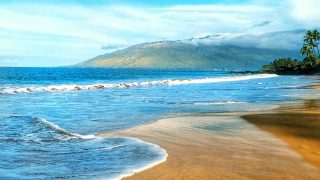
Hawaii’s Tourism Dilemma: Finding Balance Amidst Turmoil

Hawaii Tourism Boom Bursts | Troubled Waters Lurking
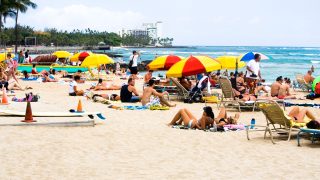
Hawaii Bad Tourist Problems On The Brink: What Have We Learned?
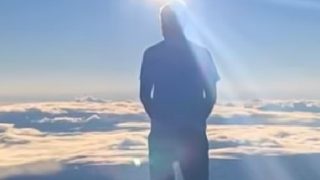
Hawaii Tourist Or Resident Misbehavior – What’s Worse?

Stopping Toxic Talk: Hawaii Visitors + Locals Find A Path Forward

Why Hawaii’s Repeat Visitors Aren’t Returning – Does Anyone Care?
Leave a comment cancel reply.
Comment policy: * No profanity, rudeness, personal attacks, or bullying. * Hawaii focused only. General comments won't be published. * No links or UPPER CASE text. English please. * No duplicate posts or using multiple names. * Use a real first name, last initial. * Comments edited/published/responded to at our discretion. * Beat of Hawaii has no relationship with our commentors. * 750 character limit.
Your email address will not be published. Required fields are marked *
Notify me of followup comments via e-mail. You can also subscribe without commenting.
This site is protected by reCAPTCHA and the Google Privacy Policy and Terms of Service apply.
122 thoughts on “Does Hawaii Want Tourists or Not? It’s Fickle.”
Although there is some truth in Lily Hiʻilani Okimura’s statements, I can’t help but wonder how her comments about tourists helps Hawaii. Hawaii’s only business is tourism! Hawaii’s real estate taxes are heavily dependent on non-islanders owned timeshares, condos and homes. So what if tourism drops, real estate prices drop, tourist revenue reduces, jobs disappear and the state can’t pick up the financial slack? Who wins? Can the Hawaiians afford to live on the island?
Over $16B spent on Tourism in 2019 before the Pandemic Lockdowns by Governor Ige, impacting over 200,000 Hawaii employee’s. It would seem, Governor Ige would rather have the Taxpayer $ from Mainland Citizenry to subsidize his State’s not wanting to go back to work, which took until June of 2022 to begin. Now, Governor Green, who proposed Visitor Fee’s (see Tax) a violation on Inter-state travel, on top of, the reality that in Maui, where no news comes out of west Maui, those from Wailea to Paia need Tourism to pay there Bills and support their employee’s. Hopefully Green can figure this out, I fear for all those in the one mile that was the Pier to Cannery in Lahaina, Blackstone will want for another Kaanapali-Wailea!
I live on the Big Island in an area that does not get that many tourists..and it’s still too much..I left Kona side just because of all the tourists and Snow Birds. So, here’s my idea… State Legislatatre…just stop funding any of these programs and give us the money back in a refund. How’s about that!! Saves our money//because it is our money//and probably less tourists.. Just a thought..just let this whole thing go..if hotels want to fund their own..that’s up to them. While I say this, I understand that alot of our economy is based on tourism, and that is something we Do need to address and start now..this year..changing that. Hawaii as a whole needs to figure out where the line on “development for tourist only” is going to be.
aloha Annie….I do not believe the People of Hawaii dont want you not to return to Hawaii…if you respect the island then, no problem……I know that we dont not want rude, wasteful, entitled, rude tourists who think that they can just disrespect and not care about Hawaii.
I have loved the Hawaiian islands since I was a child, and it breaks my heart to slowly come to understand that we are not welcome there. I love learning about the culture, the history, and the traditions of the Hawaiian people. I feel such a draw to the islands, but am starting to realize that perhaps I should just stay away if I truly care about what’s best for the islands and the people. I would love to hear more from native Hawaiians on the topic.
Load more comments
Get Breaking Hawaii Travel News
Stay abreast of the latest island travel news, tips, deals, and more. Subscribe to our FREE newsletter and let Hawaii come to you. Mahalo!
How To Be A Respectful Tourist In Hawaii
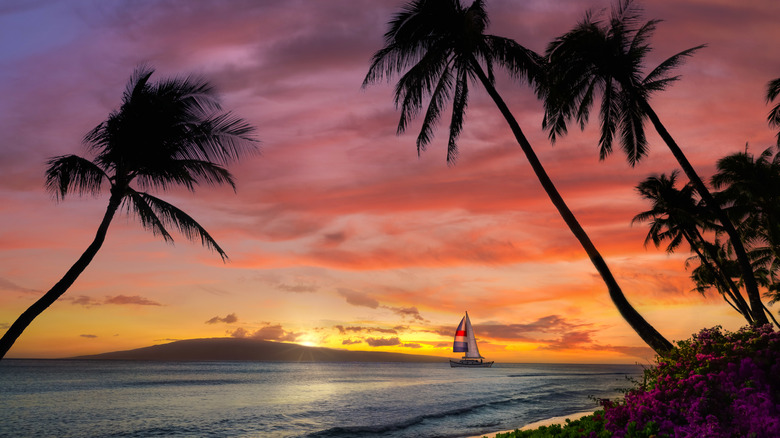
In pre-pandemic 2019, Hawaii welcomed nearly 10.5 million visitors. Given Hawaii's tropical weather , exquisite nature, idyllic beaches (with legendary surf breaks), and rich cultural heritage, it's easy to understand the appeal of the Pacific island chain. Hawaii tourism is gradually increasing to pre-pandemic levels, and droves of visitors are ready to button back up their floral shirts.
Hawaii is celebrated for its natural beauty and storied heritage, but it's also became a tropical playground for bad behavior. Some tourists to the state have drawn ire for patronizing native Hawaiian culture and disregarding the islands' fragile natural ecology. Unfortunately, the very things that make Hawaii so special are frequently assaulted by disrespectful and irresponsible tourism.
In Hawaiian culture, the term "Aloha" is more than a greeting. Its literal meaning is "the presence of breath," and the spirit of Aloha involves showing kindness towards another, demonstrating humility and patience, and living harmoniously within your environment. If you're planning to visit the Aloha State, there are a few ways to remain a respectful tourist and preserve Hawaii's namesake.
Research Hawaiian etiquette before arriving
Researching cultural etiquette is a good idea whenever visiting anywhere new, but traditional Hawaiian culture is particularly engrained into day-to-day life. Again, one of the major draws for visiting Hawaii is experiencing Hawaiian culture, so avoiding any faux pas can enhance your overall trip.
For example, the presentation of a lei is not a ceremony concocted by the tourism board. The lei has been around since the earliest Polynesian settlers,and the ceremonial garlands were initially given among chiefs as a peace offering between groups. Today, the lei is given for celebration, to symbolize friendship, or to welcome someone, which is why visitors to Hawaii are typically given a lei upon arrival. It's proper etiquette to accept the lei and wear it appropriately around your neck while in the presence of the giver. The only instance not to accept a lei is if you're pregnant (sometimes the closed lei wrapped around a neck can connote unwelcome associations with umbilical cords).
While visitors may be aware that the lei is a popular item in Hawaiian culture, they may not understand its deeper significance. To be a respectful tourist in Hawaii, it's very helpful to know "the why" of ceremony. By doing so, you'll know "the how" of behaving respectfully, allowing for a more immersive, rewarding cultural experience.
Be respectful of modern cultural norms
To dispel the notion that Hawaii is a tropical playground for tourists, we should first acknowledge the nearly 1.5 million residents who call the Hawaiian Islands home. The Hawaiian's rich cultural heritage is integrating into modern life, or you could say the spirit of Aloha is incorporated into daily norms.
While you may feel compelled to rush and fill your tourism itinerary, you'll find the pace slower on the islands. For instance, aggressive driving isn't the norm in Hawaii, and it's common courtesy to always show deference to older individuals, or the kapuna (elders). This could mean giving up your seat to someone older or waiting to hold the door open. Also, if you're invited into someone's home, you should always take your shoes off before entering.
To appreciate Hawaii, we should appreciate its slower pace and the politeness that helps keep that pace. Although being courteous and polite wherever you go is a good idea, you'll find that Aloha is a real, concrete concept in Hawaii, which commonly presents itself through daily interactions. To embrace Aloha is to embrace kindness and politeness.
Treat sacred sites as sacred sites
Representing important cultural meanings or historical events, sacred sites are an important part of Hawaiian culture. These sites include temples, rock carvings, fishponds, stones, and other archeological sites created by ancient Hawaiians. To teach visitors about traditional Hawaiian culture, many of these sites are open to visitors, such as the Pu'uloa Petroglyphs in Hawaii Volcanoes National Park and the statues at Pu'uhonua O Honaunau National Historical Park.
While open to the public, these places are still sacred in Hawaiian culture, and there are a few simple ways to remain respectful when visiting them. Regardless of the type of sacred place, it's generally a good idea to speak quietly (or remain silent) and to stay on designated walking paths. It's also important to leave everything as you found it. Rocks, flowers, and other natural items hold intrinsic value in Hawaiian culture, so rearranging anything can be deemed disrespectful.
Although many sites in Hawaii are open to visitors, some sacred places are either closed or partially closed to public. If you see a "kapu" sign, this translates to "forbidden" and refers to sacred law. Overall, if you visit a sacred site, it's always a good idea to speak to a caregiver. You'll learn both proper protocols and interesting facts about the cultural and historical significance of these cherished sites.
Be aware of Hawaii's fragile biodiversity
A reverence for the land and ocean is a cornerstone of Hawaiian culture. Hawaii's unparalleled natural beauty is a major appeal for tourists, but its natural ecosystem is also incredibly fragile. To be a respectful tourist in Hawaii, it's incredibly important to be aware and respectful of this fragility. This means refraining from littering, only hiking on designated paths, using reef-safe sunscreens , and wearing environmentally friendly bug spray.
Hawaii's far-flung location in the middle of the Pacific Ocean has helped it maintain its delicate natural balance for generations. However, when tourists introduce new biological agents, it can have a devastating effect on native ecology. For instance, the seeds and natural oils introduced by unwashed hiking gear have led to deadly fungal infections among native trees in Hawaii. It's also considered hazardous to geo-tag places in Hawaii on social media, as this causes an unsustainable crush of visitors. When visiting Hawaii, the smaller your footprint is, the more attuned you'll be to your natural surroundings.
In Hawaiian culture, all nature is sacred and contains "mana," or life force. While you may be tempted to take a flower, lava rock, or sand home with you as a souvenir, this is considered taboo in Hawaiian culture. To respect both the culture and fragile biodiversity of Hawaii, simply leave everything as you found it.
Remember that cultural practices are shared, not shown
Cultural practitioners have long been important Hawaiian liaisons to visitors, helping tourist to understand and appreciate traditional Hawaiian culture. Unfortunately, some of these practices have been distorted or exploited over the years. For example, when someone envisions a Hawaiian vacation, they may immediately think of grass-skirted Hula dancers.
However, it's not inherently wrong to think of Hula when thinking of Hawaii. The ancient dance form is one of the most important Hawaiian traditions, considered a sacred art form that tells the ancestral story of Hawaii. In other words, Hula is intended to share the Hawaiian story to visitors. But it's not merely a show.
Before choosing a hotel or other venue that offers Hula, you may want to research to see what cultural advisement the establishment receives. By doing so, you're not only acting as a respectful tourist; you're also refusing to support any exploitative practices.
Individual actions can help shape a more responsible tourism industry, and by being respectful of Hawaiian traditions, the land, and local residents, we became closer to understanding the spirit of Aloha — the most important souvenir to take home.
Maui Travel Updates

Maui Recovery
How you can kōkua the people of Maui
Learn how destination management and stewardship is advancing throughout Hawai‘i. Join our efforts and help move your island’s Destination Management Action Plan forward.
Ma‘ema‘e Toolkit
Newly released! Essential information and guidance for the visitor industry and businesses to understand how to accurately represent Hawai‘i and Hawaiian culture.
Mālama Hawai‘i
In an effort to inspire mindful travel, Hawai‘i’s industry partners & volunteer groups have come together to encourage visitors to leave Hawai‘i better than when they arrived.
Monthly Visitor Statistics
Infrastructure Research
Annual Visitor Research Reports
Visitor Plant Inventory
Historical Visitor Statistics
Evaluation & Performance Measures
Featured Research:
Hawaii Hotel Performance - 03-2024
January 2024 Hawaii Vacation Rental Performance
February 2024 Hawaii Vacation Rental Performance
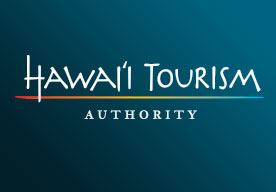
Apr 05, 2024
Hawai‘i Tourism Authority Launches Mālama Hawai‘i Dashboard Connecting Visitors with Volunteer Opportunities and Nonprofits

Mar 22, 2024
Hawai‘i Tourism Authority and O‘ahu Visitors Bureau Initiate the Process to Revitalize the Content and Preservation of the Waikīkī Historic Trail

Mar 20, 2024
Hawaiʻi Tourism Authority Launches Mākaukau Maui Campaign to Foster Economic Recovery on Maui

Mar 13, 2024
Public Input Sought to Shape Governance of Tourism in Hawai‘i
Maʻemaʻe Toolkit
To help market Hawai‘i authentically, browse through a resource of Hawaiian language tools, style and information guides, cultural activities and festivals, and other pertinent information.
See the Maʻemaʻe Toolkit
Digital Asset Library
Register to access the Knowledge Bank, a public resource of images related to Hawai‘i and tourism-related activities.
Partnership Opportunities
HTA's Global Marketing Team offers a variety of consumer, travel trade, and MCI marketing opportunities. Partnership opportunities include digital and social media marketing, public relations, travel trade, and meeting sales programs.
See All Partnership Opportunities
Announcements
Read the latest announcements that provide up-to-date information about current HTA's programs, events and activities.
See All Announcements
We are responsible for protecting the iconic brand of the Hawaiian Islands. This includes perpetuating the Hawaiian culture, preserving Hawaii’s natural environment, and strengthening communities by managing tourism in a way that helps improve the quality of life for residents, families and communities on all islands.
Natural Resources
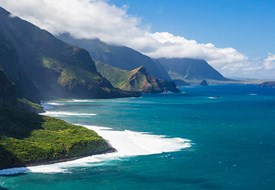
Their beauty unparalleled, Hawai‘i’s natural resources are among the most precious in the world and one of the greatest assets to our quality of life in the Islands.
More about Natural Resources
Hawaiian Culture
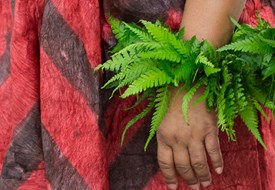
The Hawaiian culture is integrated into every element of HTA’s programs to support Hawai‘i.
More about Hawaiian Culture
Community Enrichment
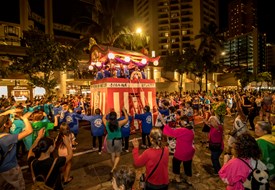
Community-created projects, festivals and events provides authentic experiences that showcase Hawai‘i’s multi-cultures. Training workshops and resources offered to further develop skills and tourism products.
More about Community Enrichment
Brand Marketing
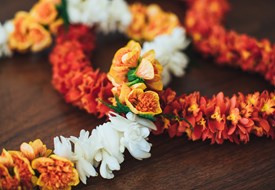
HTA works to promote Hawaii's brand around the world.
Branding Efforts
- WHY CHOOSE US?
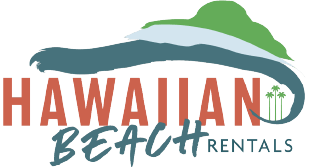
- THINGS TO DO
Hawaiian Greetings And Words Every Tourist Should Know – How To Say Welcome In Hawaiian
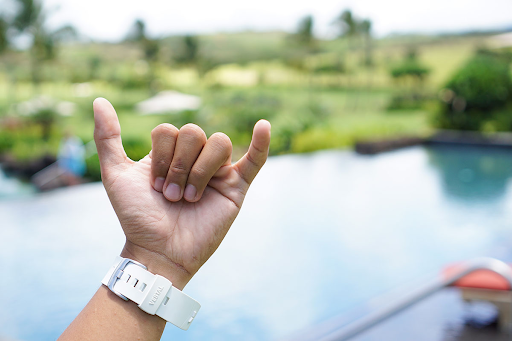
Immersing yourself in the local culture of Hawaii can elevate your travel experience, and one of the most rewarding ways to connect with the vibrant spirit of Hawaii is by familiarizing yourself with its unique language.
While English is widely spoken and understood throughout the islands, taking the time to learn some essential Hawaiian greetings and words can open doors to a deeper connection with the people, the land, and the rich cultural heritage that defines this tropical paradise. The effort of learning their language demonstrates respect for the culture and showcases your genuine interest in connecting with the local community. This small gesture will not only be appreciated by the residents but also provide you with a profound sense of belonging and cultural appreciation.
Here are some Hawaiian words, phrases, and greetings that every tourist should know or learn if they’re visiting Hawaii :
Hawaiian Words – Basic Words With A Lot Of Meaning
It’s pretty obvious that learning a new language can be challenging, especially when it comes to sentences and complete fluency. That’s why it’s helpful to begin with the basics and focus on easy words first. If you’re planning a trip to Hawaii , knowing a few essential Hawaiian words is a great way to connect with the local culture. Here are some fundamental words to get you started:
Aloha embodies the warm and welcoming spirit of Hawaii . It can mean hello, goodbye, love, affection, and peace. It represents the essence of connecting with others and fostering harmony.
Mahalo is the Hawaiian way to express gratitude and say thank you. It carries a heartfelt appreciation for acts of kindness or assistance received.
E komo mai
The meaning of e komo mai is pretty simple. It’s a Hawaiian phrase used to say “welcome.” It invites others to enter or join in a friendly and inclusive manner.
Ohana signifies family, extending beyond blood relations to include close friends and even the community. It emphasizes the value of strong bonds and a sense of unity.
Hana means work or to do. It highlights the importance of putting effort into tasks or activities and emphasizes productivity and engagement.
Fact: Hana is also a place in Hawaii. Road to Hana is a famous tourist spot in Maui .
Pau hana refers to the end of the workday, after work, or finished work. It signifies the time to relax, unwind, and enjoy leisure activities .
Moana means ocean or water. It represents the vastness and beauty of the ocean , symbolizing adventure, exploration, and connection to the surrounding islands.
Mauka indicates the direction towards the mountains or inland. It is commonly used for giving directions or describing locations in relation to the mountains.
Makai refers to the direction toward the sea. It helps to describe locations or provide orientation based on the ocean’s proximity.
Mahina means moon or moonlight. In Hawaiian culture, the moon holds spiritual and cultural significance, representing the changing cycles of nature.
Must Read : 3 things that thrive at night in Hawaii
Pua means flower or offspring. This word celebrates the vibrant and delicate blossoms that grace the islands, symbolizing beauty and fragility.
Ono describes something delicious, pleasable, or tasty. It is a word that’s commonly used to express the enjoyment of delightful food and flavors found in Hawaiian cuisine .
Nalu means wave or the surfs in the ocean. With Hawaii’s renowned surf culture and stunning coastal scenery, nalu captures the energy and power of the ocean waves.
Also Read : Staying Near Oahu Culture + Scenery
Keiki refers to a child or children and is pronounced as “kay-kee”. It is an endearing term used to describe young ones and represents the future generation.
Hapai means pregnant . It acknowledges the special stage of carrying new life and celebrates the beauty of motherhood.
Mau loa translates to forever or eternal. This word signifies the enduring and timeless nature of something, emphasizing its long-lasting quality or significance.
Paniolo is a Spanish word that refers to a cowboy or cowgirl. But in Hawaii, it’s used to call someone who herds cattle. It reflects the influence of the ranching and cowboy culture in Hawaii, particularly on the Big Island .
Pupu describes appetizers, finger food, or snacks. This word is used for the delectable small bites enjoyed during social gatherings or pau hana.
Wai is the Hawaiian word for freshwater or just water. Water holds deep respect in Hawaiian culture as a life-giving force, essential for sustenance, cleansing, and spiritual rituals.
Aina translates to land or earth. It symbolizes the connection between the Hawaiian people and their ancestral lands, representing a deep respect and stewardship for the environment.
By familiarizing yourself with these essential words, your communication skills will automatically become smoother, and you’ll have an even greater time immersing yourself in the vibrant culture of the islands!
- Hawaiian Words for Men and Women
The Hawaiian word for man is “kāne” and for a woman, it is “wahine.”
- Hawaiian Greetings
Now that you have learned the essential Hawaiian words , it’s time to delve into Hawaiian greetings. Greetings hold the key to connecting with others and immersing yourself in the spirit of Hawaii. Once you familiarize yourself with these Hawaiian greetings, you get to enhance your ability to connect with the locals and fully experience the culture of the islands. Let’s explore some of the common Hawaiian greetings that will enrich your time in Hawaii:
E komo mai i ka hale
Experience the true spirit of Hawaiian hospitality with the heartfelt phrase “E komo mai i ka hale,” which means “Enter the house” or “Come into the house”. This warm and inviting greeting extends beyond a simple welcome, embracing others with open arms and creating a sense of belonging and comfort in the shared space.
Also Read: Where To Stay In Hawaii For The First Time: A Guide To Finding The Best Accommodation
Pehea kāu nā’au
Dive deeper into meaningful connections by asking “Pehea kāu nā’au,” which translates to “How are you” or “How is your heart/mind?” This genuine question is a meaningful way to go beyond surface-level conversations, showing sincere interest in someone’s emotional well-being and providing a safe space for open and authentic dialogue.
Hau’oli lā hānau
Looking to spread joy and celebrate someone’s birthday? Try the phrase “Hau’oli lā hānau” which means “Happy birthday.” This cheerful expression conveys your heartfelt wishes for a joyous and memorable celebration, as you join in commemorating their special day and making them feel truly appreciated.
Also Read : Top Seven Upcoming Festivals and Celebrations in the Islands
A hui hou kākou
Bid farewell with the heartfelt phrase “A hui hou kākou,” which means “Until we meet again.” This parting phrase carries a sense of fondness and hopeful anticipation of future reunions, leaving a lasting impression of connection and the sincere desire to cross paths once more.
Aloha ‘oe
Get the opportunity to express your affectionate farewell with “Aloha ‘oe,” which translates to “Farewell to you”. This timeless phrase encapsulates the essence of aloha, radiating warmth, love, and deep respect as you bid adieu, leaving a lasting positive impression and carrying the spirit of Hawaii with you.
Fact: Aloha ‘oe is also a famous Hawaiian folk song written c. 1878 by Liliʻuokalani.
How To Say Welcome In Hawaiian?
It depends on what type of welcome you are trying to say.
If you’re saying ‘welcome’ in the sense that you are welcoming someone, you can use the phrase ‘E komo mai.’ It is a warm and hospitable expression that extends a heartfelt welcome to someone.
And to respond to “thank you” with “you’re welcome,” you can say “He mea iki”.
These are the words and phrases you should learn before visiting Hawaii!
Related Blogs
While Hawaii is part of the United States, many visitors from the mainland and other parts of the world find that knowing a few Hawaiian words, terms and customs can go a long way (especially for those travelers who want to avoid that label, Ugly American). A beautiful language, with…
Islands like Hawaii are so remote that the creatures there tend to be at least a little different than anywhere else. Take, for example, the monk seal. These adorable sea puppies can only be found on the Hawaiian islands. Another animal you can see in Hawaii is the green sea…
Namahana Plantation Main House and Guest Cottage Built for a vacation stay that feels like an inviting home, Namahana Plantation is spacious enough for an extended family or for a couple to kick back and enjoy Kauai’s North Shore. Relax by the pool or pick fresh fruit from the orchard.…
Table of contents
- Hawaiian Words – Basic Words With A Lot Of Meaning
- How To Say Welcome In Hawaiian?

IMAGES
COMMENTS
The island state is burdened by overtourism - and it's becoming a big problem. Last year, tens of thousands of extra US tourists left Hawai'i in turmoil as it struggled to cope with unprecedented ...
John Locher/AP. The consequences of Hawaii's drive for tourists. 1 of 11. CNN —. The world-famous Ha'ikū Stairs along Oahu's Ko'olau mountain range, known as the "Stairway to Heaven ...
But residents are now asking Hawaii's Tourism Authority to stop promoting the town as an overnight destination. "We have a city ordinance that does not permit these short terms tourist rentals ...
Arrivals peaked on Saturday, April 3, when nearly 29,000 people stepped foot onto one of Hawaii's eight major islands, approaching pre-pandemic tourism levels . On Friday, the CDC announced fully ...
Advance reservations have been required since 2021. That is true for both vehicles as well as walk-in entry. Reservations may be made up to 30 days in advance and no later than the day before your visit. Hawaii residents are exempt from both the fee and reservation requirements with proof of residency. When residents bring visitors, those ...
August 17, 2023 at 1:37 p.m. EDT. A hand-lettered sign on Leialii Parkway asks tourists to keep out in Lahaina, Hawaii, on Aug. 13. (Mengshin Lin for The Washington Post) 13 min. While the Maui ...
The conversation was, yes, heated at times (this is Molokai, folks). But when it finally carried on after several hours of debate, this scrappy group came up with something quite surprising. The ...
Keani Rawlins-Fernandez grew up in Hawaii and has seen tourism increase over the years. Now a local council member, Rawlins-Fernandez says locals can feel overrun by tourists.
Under the new guidelines, the first-day travelers could visit the state without Safe Travels restrictions will be March 26th. That now means beginning March 26, 2022, domestic travelers to Hawaii will no longer need to fill out online forms via Safe Travels, no longer have to worry about QR codes, no longer have to provide proof of vaccination ...
At least 28,000 people arrived in Hawaii on each of the last two Saturdays, according to state travel data — the most in a day since the pandemic began, and not far from typical prepandemic ...
Aug. 18, 2023, 1:00 PM PDT. By Alicia Victoria Lozano. LAHAINA, Hawaii — Nearly two weeks after deadly wildfires burned much of west Maui to the ground and left more than 100 people dead, the ...
Hawaii Gov. David Ige established a mandatory two-week self-quarantine for any out-of-state visitors and inter-island travelers on April 1. Anyone who violates the mandatory quarantine could face ...
Now, Governor Josh Green is amending that message and asking visitors to return to the island to help economically support the recovery efforts. "Right now I want to speak to the world when I ...
In my opinion the backlash breaks down into three broad sections: (1) Overtourism: In 2019, Hawaii saw a record number of visitors at 10.4 million. With an estimated state population of about 1.5 million that's almost 7 visitors for every one resident. The 2019 number is an increase of about 5.4% over the 2018 numbers.
Alison Fox. Published on October 20, 2021. Hawaii will officially welcome tourists back on Nov. 1 after asking visitors to stay away for weeks, the state's governor said on Tuesday, according to ...
Over $16B spent on Tourism in 2019 before the Pandemic Lockdowns by Governor Ige, impacting over 200,000 Hawaii employee's. It would seem, Governor Ige would rather have the Taxpayer $ from Mainland Citizenry to subsidize his State's not wanting to go back to work, which took until June of 2022 to begin.
In pre-pandemic 2019, Hawaii welcomed nearly 10.5 million visitors. Given Hawaii's tropical weather, exquisite nature, idyllic beaches (with legendary surf breaks), and rich cultural heritage, it's easy to understand the appeal of the Pacific island chain.Hawaii tourism is gradually increasing to pre-pandemic levels, and droves of visitors are ready to button back up their floral shirts.
Nothing could be more quintessentially American than being told you're not welcome and responding with "Fuck you, I'm rich and you are poor." ... thread. This is why you're seeing so much overt anti-tourist sentiment on social media. When the pandemic started, Hawaii folks took to various Hawaii travel Facebook groups with messages ...
Maui officials say tourists needed to prevent 'secondary economic disaster'. By Clare Fonstein UpdatedAug 30, 2023 8:40 a.m. Beachgoers are seen at Kamaole Beach Park I in Kihei, a part of Maui ...
Hawai'i Tourism Authority Launches Mālama Hawai'i Dashboard Connecting Visitors with Volunteer Opportunities and Nonprofits. Mar 22, 2024. Hawai'i Tourism Authority and O'ahu Visitors Bureau Initiate the Process to Revitalize the Content and Preservation of the Waikīkī Historic Trail. Mar 20, 2024. Hawaiʻi Tourism Authority Launches ...
For those looking to Hawai'i for a tropical getaway, Native Hawaiian has a message: please don't come. Okimura regularly posts content about the issues affecting Pacific Islanders, and one recurring topic is tourism. The islands of Hawai'i have long been tourist destinations; in 2019, a record 10.4 million people visited the islands.
The Haiku Stairs, an Oahu landmark often called the Stairway to Heaven, will be removed from the end of April, according to a press release from the Honolulu city government. "I can promise you ...
Today 0°F -18°C. Hide Week Forecast. Discover the beauty, culture and adventures waiting for you on the Hawaiian Islands. Find Hawaii travel information and plan your perfect vacation.
Reality check: There's plenty of housing on Maui. It's just mostly owned by people who don't live there. And it's being rented out to vacationers who can afford the $500/night prices. More than 1,500 people whose homes were burned down have left Maui for lack of housing, according to the Council for Native Hawaiian Advancement.
Immersing yourself in the local culture of Hawaii can elevate your travel experience, and one of the most rewarding ways to connect with the vibrant spirit of Hawaii is by familiarizing yourself with its unique language.. While English is widely spoken and understood throughout the islands, taking the time to learn some essential Hawaiian greetings and words can open doors to a deeper ...